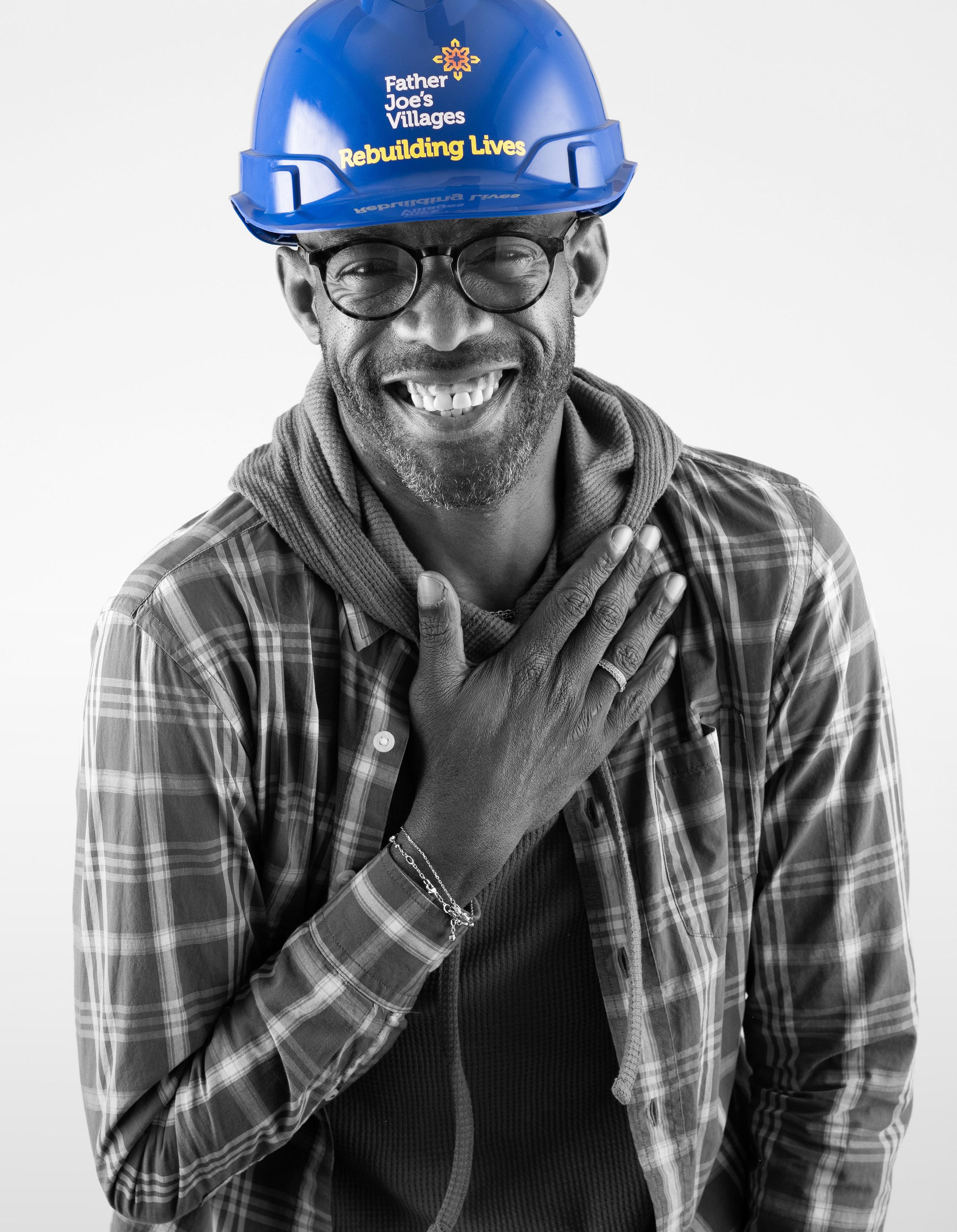







Be a part of a Hero’s Journey! We provide therapeutic support to veterans and their families through outdoor adventures in the rugged beauty of Alaska.
About Alaska Adventure Project:
Founded in 2017 by U.S. Marine Combat Veteran and Native Alaskan William Boulton. Alaska Adventure Project (AAP) is a 501c3 non-profit dedicated to supporting military veterans and their families.
Our Adventure program entails:
• Therapeutic support for veterans and their families suffering with PTSD and TBI.
• Veterans helping veterans through shared experiences.
• Outdoor activities provide atmosphere’s of reflection, discovery, meaning of service, camaraderie,
• New network of resources, a new extended family, connecting veterans with veterans, establish lifelong bonds, and promote healing.
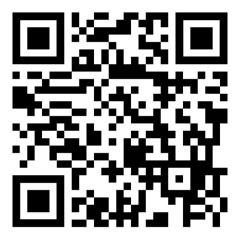










Publisher
Editor-In-Chief
Mike Miller
Monthly Columns
What’s Next Transition
Eve Nasby
Human Resources
Paul Falcone
Franchise Dreams
Doug Dwyer
Successful Transitioning Stories
Homeland is a veteran-focused magazine throughout the country. It serves to assist all veterans, active military as well as their spouses and families.
It’s the leading veterans magazine emphasizing resources, support and focusing on topics and issues facing today’s veteran community. Homeland focuses on resources, support, community, transition, mental health and inspiration for our veterans, & military personnel.
The content is the driving force behind our magazine and the connection it makes with our veterans, service members, military families, and civilians.
The magazine is supported by a distinguishing list of veteran organizations & members, resource centers, coalitions, veteran advocates, and more.
We are honored to share the work of so many committed and thoughtful people.
Despite all the challenges, our team has upheld their focus and let not one opportunity go to provide resources and support to our veterans & military personnel.
On behalf of our team, we wanted to take this moment to say THANK YOU to the readers and the military and veteran community for supporting our magazine. With that support we aim to make a difference and continuing to make a profound impact on the quality of life for our veterans, military personnel and their families.
If you want to catch up on the current and all past issues please visit: www.homelandmagazine.com/archives
Mike Miller
Editor-In-Chief
mikemiller@homelandmagazine.com www.homelandmagazine.com
Dr. Julie Ducharme
Veterans in Business
Barbara Eldridge
Risky Business
Hadley Wood
Real Talk: Mental Health
Hope Phifer
PTSD: Reclaiming Control
Robert ‘Bob’ Cuyler, PhD
Legal Eagle
Kelly Bagla, Esq.
Veterans Chamber Commerce
Joe Molina
Contributing Writers
Wounded Warrior Project
Disabled American Veterans
(In-House) Correspondents
Holly Shaffner
CJ Machado
Lori Noonan
Homeland Magazine 9528 Miramar Road, #41 San Diego, CA 92126 (858) 275-4281
mikemiller@homelandmagazine.com
Homeland








- Francis Scott Key
"Land of the Free and home of the Brave" is a phrase from the last line of the Star-Spangled Banner, the U.S. national anthem. It is often associated with the Fourth of July and Independence Day celebrations in the United States, as it embodies the nation's ideals of freedom and courage.

Independence Day is annually celebrated on July 4th and is often known as “the Fourth of July”.
It is the anniversary of the publication of the declaration of independence from Great Britain in 1776. Patriotic displays and family events are organized throughout the United States.
On July 4th, 1776 the United States laid down its claim to be a free and independent nation by adopting the Declaration of Independence. Today, Independence Day is celebrated and honored in many forms such as fireworks, BBQs and parades. It is an opportunity for Americans to express patriotism and love of country including reflecting on the sacrifices from those in the military.
On June 11th, 1776 the Second Continental Congress met in Philadelphia to formally sever ties with Great Britain. Thomas Jefferson, who considered an esteemed writer, was selected to draft the document. After 86 revisions and on July 4th, 1776 the Continental Congress signed the final version.
The first readings of the document included ringing of bells and band music. The following Fourth of July Congress was adjourned in Philadelphia and everybody celebrated with bells, bonfires and fireworks. Soon these customs spread to other areas within the 13 colonies and new customs began to develop such as picnics, speeches, games, military displays and of course fireworks. These traditions continued for almost a century before Congress finally established Independence Day as a holiday.
Thomas Jefferson was the principal author of the Declaration of Independence.
The Declaration states,
“We hold these Truths to be selfevident, that all Men are created equal, that they are endowed by their Creator with certain unalienable Rights, that among these are Life, Liberty, and the Pursuit of Happiness….”
• The original copy of the Declaration is housed in the National Archives in Washington, D.C. and July 4 has been designated a national holiday to commemorate the day the United States
• Independence Day 2015 is the 239th Independence Day.
• 56 People signed the Declaration of Independence.
• John Hancock was the first signer and famously had the largest signature.
• In July 1776 there were an estimated 2.5 million people living in the Colonial United States.
• Currently there are approximately 316 million Americans.
• The Declaration of Independence was revised 86 times.
• The first Independence Day was celebrated on July 8, 1776.
• Thomas Jefferson and John Adams both died on the Fourth of July, 1826.
• Barbecue with friends and family
• Watch a fireworks show
• Go to a blockbuster movie release
• Have a block party
• Light some fireworks (safely & legally of course)
• Attend a baseball game
• Find water – Boating, beaching and water skiing
• Rent a 4th of July themed movie
• Find a National Park hosting a July 4th event
• Fly the American Flag
• Wear Red, White and Blue
• Volunteer to help our veterans
• Take a trip to a special fort, park or monument near you.
• Go to a Fourth of July celebration
• Attend a Revolutionary War reenactment
• Send Letters, Care Packages, and Other Ways to Support the Military


The 4th of July is a time of celebration and patriotism in the United States, marked by fireworks displays and festivities However, for many individuals, particularly members of the military and veteran community, or those who have experienced traumatic events involving gunfire or explosives, these celebrations can activate emotional distress and trauma responses This guide provides tips for navigating these challenges and fostering empathy and support
PTS Activation: Fireworks often activate PTS symptoms among veterans, leading to anxiety, panic attacks, and flashbacks due to the association with combat sounds
Sensory Overload: The combination of loud noises and bright lights can cause sensory overload, resulting in significant emotional distress
Sleep Disturbance: Fireworks, especially those set off late at night, disrupt sleep patterns, exacerbating PTSrelated sleep issues
Emotional Struggles: Fireworks can evoke memories of sacrifices and losses, leading to complex emotions
Social Isolation: To avoid distress, some veterans may isolate themselves during celebrations, which can further impact their mental health
Create a Safe Space at Home: Designate a quiet, comfortable area in your home equipped with blankets, books, & comfort items where you can retreat if the celebrations become overwhelming
Noise Reduction: Use noise-canceling headphones or earplugs to reduce the impact of loud noises
Inform Neighbors: If you feel comfortable, inform your neighbors about your sensitivity to fireworks They may be willing to adjust their celebrations or give you a heads-up before starting
Engage in Distraction Techniques: Engage in activities that require focus and can serve as distractions, such as puzzles, games, or crafts
Self-Care: Promote self-care activities that enhance relaxation and well-being, such as exercise, hobbies, or spending time with loved ones.
Support Systems: Lean on friends, family, or support groups such as those offered by Give an Hour for emotional support
Promote Awareness: Share information about how fireworks can affect veterans and others with trauma histories. Raising awareness can foster a more supportive community.
Participate in Community Events: Support and attend community events that are designed to be inclusive and considerate of those who may be distressed by fireworks.
Offer Alternatives: If you’re hosting a gathering, provide alternative activities that don’t involve loud noises, such as a movie night, a barbecue, or a game night.
Advocate for Silent Displays: Advocate for the use of silent fireworks in your community. Silent fireworks provide visual enjoyment without the loud noise that can cause distress.
Encourage Support: Encourage those experiencing distress to seek professional resources or join trauma-focused support groups, like the ones offered by Give an Hour, where individuals can express emotions and share experiences without judgment.
“As we celebrate the 4th of July, let’s remember that fireworks can be distressing for some, especially our veterans. Consider quieter celebrations and check on your neighbors who might need support.” Show support on social media

www.giveanhour.org/military
www.giveanhour.org/military

Camille Harrison’s rendition of “America the Beautiful” offers a heartfelt tribute that resonates deeply with veterans and military families.

In a time marked by division and uncertainty, this powerful interpretation serves not only as a celebration of the nation’s beauty but also as an homage to those who have sacrificed or its freedom.
For veterans, the song encapsulates a myriad of emotions tied to their service. The lyrics, originally penned by Katharine Lee Bates in 1893, reflect the ideals of hope, unity, and the splendor of the American landscape—elements that veterans hold dear. Camille’s version reinforces the bond between the land and those who have fought to protect it, reminding listeners of the resilience and bravery that define the military community.
Harrison shares. “I wanted to honor those who paid the ultimate price and fought for our freedom,” she shares, emphasizing the importance of remembering the sacrifices made in the name of liberty. This sentiment resonates profoundly with veterans, who often carry the weight of their service long after their duty ends.
In her performance, Camille highlights the beauty of camaraderie and mutual respect that is cultivated in the military. Her message comes at a critical moment, as the nation prepares for an election year filled with divisive rhetoric. “I wanted to remind us to see the beauty in America, as well as in our friends and neighbors,” she states, urging a collective focus on the shared values that unite rather than divide. This call for unity echoes the experiences of veterans who have fought alongside their comrades, transcending political and social barriers.
The production of her rendition reflects a commitment to honoring the song’s legacy. Collaborating with skilled musicians, Camille has crafted a sound that balances nostalgia with inspiration. The arrangement enhances the emotional depth of the lyrics, creating an uplifting experience that resonates with audiences, especially veterans who find solace and strength in music.
As military families gather to reflect on their shared experiences, Camille Harrison’s “America the Beautiful” stands as a poignant reminder of the freedom and beauty that the armed forces protect. For veterans, the song is not just a melody; it’s a heartfelt acknowledgment of their sacrifices and the enduring spirit of unity. In a world that often emphasizes division, her rendition inspires listeners to come together, honoring the values that make America truly beautiful.
As we move forward, let us embrace the message of hope and unity encapsulated in Harrison’s performance, fostering a sense of belonging and recognition for our veterans. Camille’s dedication to honoring military service through her music exemplifies the profound impact that art can have in bridging gaps and healing wounds, creating a future built on understanding and shared ideals.
For more information and to connect with Camille Harrison, please visit:
Website: CamilleHarrison.com
Instagram: @CamilleHarrisonMusic
Facebook: @CamilleHarrison
Spotify: CamilleHarrison
YouTube: CamilleHarrisonMusic
Stream “America the Beautiful”: camilleharrison.hearnow.com/america-the-beautiful

By Joseph Molina veteransccsd@gmail.com www.vccsd.org

The concept of American Freedom is rooted in the founding ideals of the United States—liberty, justice, and the rule of law. At the heart of these principles lies the U.S. Constitution, a living document designed not only to define the powers of government but, more importantly, to protect the individual rights and freedoms of everyone.
To live in a free country, as defined by the Constitution, is to live in a society where the government’s authority is limited by law, and where the people hold the ultimate power. The Constitution guarantees basic rights such as freedom of speech, religion, and the press; the right to a fair trial; the right to vote; and the right to live without undue interference from the state. These are not privileges, but inalienable rights secured by a framework of checks and balances that ensure accountability at every level.
American freedom is also about the opportunity to pursue one’s own path—whether in education, business, personal life or belief—without fear of oppression. This vision is supported by the Bill of Rights, which offers protections against governmental overreach. For example, the First Amendment ensures the right to express dissenting opinions, even when those views challenge those in power. The Fourth Amendment protects against unreasonable searches and seizures, reinforcing the idea that individuals have a zone of privacy that the government must respect.
Freedom in America depends on a functioning legal system, civic responsibility, and an informed citizenry. The Constitution provides not only freedoms but also responsibilities—requiring that laws be applied equally and that no one is above the law.
In times of uncertainty, the meaning of American freedom is often debated, but its foundation remains clear: a government that exists to serve its people, bound by a Constitution that prioritizes liberty, justice, and equality. To live in a free country is to have the power and freedom to shape one’s future while

respecting the freedoms of others. That enduring principle is what continues to make America both exceptional and worth preserving.
In summary, American freedom is more than a symbol—it's a structured reality safeguarded by the U.S. Constitution. It ensures that power rests with the people, rights are protected, and justice is upheld. Living in a free country means having both the liberty to pursue personal goals and the responsibility to contribute to a just society.
As long as the Constitution endures, so too does the promise of freedom, making America a beacon of hope, opportunity, and democracy for generations to come.

The grill glows hot, the beer is on ice, and the fireworks are ready to burst. Fourth of July is a holiday celebrated through food. There’s potato salad, popsicles, watermelon slices — and, of course, apple pie. But this all-American dessert isn’t as homegrown as you’d think. “When we say, ‘As American as apple pie,’ we think of baseball and hot dogs without ever considering not one ingredient in apple pie originates from what we call the United States,” says Libby O’Connell, author of The American Plate: A Culinary History in 100 Bites.
The British used animal fat, wheat, and water to create airtight pastry shells with the un¬appetizing name of “coffyns.” These savories were usually stuffed with beef or venison. In America, the shells became flakier (like the strudels made by German immigrants) and the meat fillings were replaced with apples, a way to use up imperfect fruit.
The sweet, juicy fruit we use in pie isn’t native to North America, which specializes in crab apples. It originated in Kazakhstan. The Romans then crossed it with astringent apples used for making ¬cider. (True tidbit: Johnny “Appleseed” Chapman really did plant orchards around the United States.) Love apples? Here are some other healthy ways to eat apples you didn’t know about.
Wheat
First cultivated more than 9,000 years ago, ancient wheat has been found in Iraq, Iran, and throughout the Middle East. The “king of grains” spread through Europe and then to the New World, where it failed miserably, which is why colonists relied on a Native American staple for baking: corn. In the late 1800s, Russian immigrants brought a wheat variety known as Turkey Red, which was better suited to our climate.
Wild boars (the ancestors of lard-producing pigs) are native to Asia, Europe, and Africa. It was actually Christopher Columbus, on his second voyage to the New World in 1493, who brought pigs and cattle, the source of all things dairy.
Columbus also played deliveryman for sugar, which originated about 4,000 years ago in Indonesia, India, China, and what is now Papua New Guinea.

Cinnamon comes from an evergreen tree native to Sri Lanka. (The prophet Moses and Rome’s emperor Nero are believed to have eaten it.) The variety most commonly found on super¬market shelves today is cassia cinnamon, which originated in southern China. Cloves and nutmeg, indigenous to the Banda Islands of Indonesia, were considered so precious that Ferdinand Magellan brought 50 tons of them back to Spain after he sailed around the world in 1522. Watch out for these foods that are surprisingly high in sugar.
Becoming an American “Original”
Once all the ingredients were in place, putting them together was as easy as—Well, it wasn’t so easy after all. Although the earliest apple pie recipes date to the 1300s, it took nearly 500 years for the dessert to hit it big in the United States. “During the Civil War, both Union and Confederate troops scavenged for apples and commandeered the hearths—and flour bins—of white farmers and black tenants to bake pies,” writes John T. Edge in Apple Pie: An American Story.
“Wartime adversity fixed the taste of apple pie on the palate of generations to come.” By 1902, an editorial in the New York Times proclaimed that pie had become “the American synonym for prosperity.” In the 1920s, the phrase as American as apple pie started to appear in print, and by World War II, soldiers declared that they were fighting “for mom and apple pie.” Apple pie—wholesome and comforting—had woven itself into the way we see our country.
Given apple pie’s strong associations with America, there’s perhaps some small irony that it is not necessarily a homegrown American product, but something baked overseas and brought to these shores. But if immigrants comprise a key component of the United States’ lifeblood, then there is perhaps no better symbol of America than the delicious dessert.
By Paris Moulden, Wounded Warrior Project

Ever since he was a little kid, Brian Zreliak loved putting the images in his mind on to paper. He didn’t need words to express himself, just some color and his imagination.
“Brian’s been drawing since he was 3 years old,” his mother, Nancy Zreliak, said. “He won his first coloring contest when he was 3 or 4, and it was in an older group.”
Brian’s love of art continued into adulthood. He graduated from the Pittsburgh Art Institute, but in 2003, Brian felt compelled to serve his country and joined the Army. He was stationed in Alaska and received orders that his unit would deploy to Iraq in 2005.
“I was so nervous. I didn’t want him to go,” Nancy said. Before he was to leave for Iraq, Brian visited his family back home in Hermitage, Pennsylvania. Little did they know it would be the last time they saw Brian as he was when he left.
The war in Iraq didn’t turn out to beBrian’s biggest battle. A devastatingaccident on the desolate Alaskan highway resulted in several severeinjuries, altering Brian’s ability to speak, remember, and move his legs and arms.
Serving the nation’s most severely wounded warriors, including those with significant brain injuries, is the purpose of the Wounded Warrior Project® (WWP) Independence Program. The life-changing programs and services offered by WWP™ support warriors like Brian and caregivers like Nancy never feel alone on their journeys to recovery.
Brian returned to Alaska in July 2005 after visiting his family. The commute from the airport to Brian’s duty station was six hours. A fellow soldier and his wife picked Brian up from the airport, and Brian used the long drive back to take a nap in the backseat of the SUV.
Not long before reaching their destination, the driver lost control of the vehicle, causing the SUV to roll multiple times along the remote stretch of road. The impact ejected Brian from the car.
“They couldn’t even find him at first,” Nancy said. “The only window that was broken was the one he went through. He was thrown 80 feet from the vehicle, and his head hit the pavement.”
Nancy, Brian Sr., and Brian’s younger sister, Danielle, received the devasting news that Brian might not survive the accident.
“They told us he only has about an hour to live, so you better hurry up and get here,” Nancy said. “We can’t even get to Pittsburgh in an hour.”
The Zreliaks rushed to get to Alaska and did the only thing they could do in the meantime as they waited on word of his condition — pray.
After three plane rides, they arrived at the hospital to find Brian in a coma, still hanging on, but his condition was dire.
After three months at the hospital in Alaska, Brian transferred to a veterans hospital in Virginia, where he spent another three months. Doctors recommended placing him in a nursing home for long-term care — but Nancy wouldn’t hear of it.
“Absolutely not,” Nancy’s responded. “He’s coming home if we have to carry him.”
Home for the Holidays – and a New Way of Life
Brian returned home to his family just in time for Christmas. Before his arrival, Danielle decorated the house with lots of twinkling lights.
“He just looked around, and it was so funny because he had this look on his face,” Nancy said. “And I thought, ‘Oh my goodness, he’s smiling.’ Brian never smiled at the hospital; he was just blank. That was the first step where we knew that he knew he was home, and it felt good. That started the journey.”
At the beginning of the journey, Nancy stayed with Brian 24 hours a day. Coming home helped, but it was just the first step in a long journey of unknowns.
One of the most difficult times, though, was watching Brian struggle to come to terms with his changed body and mind.
“I could tell he was trapped,” Nancy said. “He knew what he wanted to do, he just couldn’t do it.”
Without realizing it at the time, Nancy had also become trapped. She was juggling the responsibilities of Brian’s care and frustrated with not understanding what Brian was feeling. Brian Sr. decided to leave his job to help care for his son and give Nancy some muchneeded breaks.
“I’ll tell you one thing, we were the best people to work together with my son,” Nancy said. “When I couldn’t deal with something, he’d take over, and when he couldn’t deal with something, I’d take over. We knew Brian best, and it just worked out perfectly.”
Asking for – and Getting – a Sign of Hope
Nancy held onto hope that Brian would regain the abilities he’d lost, but some days were harder than others. She often prayed for a sign — something to show her what the future held.
Through relentless effort and the support of specialists, Brian began to speak more and improve his mobility. However, memory issues complicated things, as thoughts often slipped away before Brian could voice them.
One day, Nancy saw Brian, eyes wide, and could feel he had something important to tell her. He said, “A sign … a sign from God.” After some effort, Brian told her, “Everything is gonna get better.”
She shared the news of Brian’s vision with her pastor, who agreed — it was a message meant for both of them.
“I had wanted it, but he gave the person with a brain injury a vision to tell me everything was going to be OK,” Nancy said.
With the help of WWP’s Independence Program, Brian reconnected with the medium he loved so much as a child – creating art.

“In 2016, we started with touch drawing,” said Brian’s art therapist at Fine Art Miracles. “It allowed Brian to get more variation in lines and prompted him to choose colors, giving him some control in his life.”
Brian has continued to improve physically, cognitively, and emotionally while engaging in art therapy.
Because of his injuries, Brian’s hands and arms don’t work as they once did. Initially, it made doing artwork frustrating because the image on the paper didn’t match what he saw in his mind.
But over time, Brian gained a gift most people spend their lives chasing — the ability to live in the present and not focus on the past.
“Brian lives in the moment,” Nancy said. “He’s never in a bad mood. And if he does get upset, he’s over it in two minutes. The more time you spend with him, the more you try to look at the world his way.”
Nancy has also learned not put too much pressure on herself. The family takes it one day at a time, leaning on faith and each other.

“I leave it to God, and that gives me strength because I look at my son and say, we did have a miracle. … He’s a reminder of how beautiful life is. He is such an inspiration.”

By: Robert ‘Bob’ Cuyler, PhD Psychologist and Trauma Expert
In this series, we’ve reported on the wide variety of available treatments for PTSD (as well as their pros and cons) and encouraged choice and patient-centered approaches. The ‘big picture’ has consistently been that PTSD can impair personal and family life, but that treatment is worth it. PTSD has a wide range of symptoms, including re-experiencing traumatic memories, avoidance of ordinary activities and events, impact on mood/irritability/anger, and a stressed-out mind and body ready to react to perceived threats. Successful treatment can improve all of these. But this month, we’ll focus on yet another reason to take action –the impact of PTSD on overall health.
The relationship of PTSD to health is complicated, and we haven’t determined a simple cause-and-effect. Indirect influences are probably involved, including behaviors such as diet, smoking, alcohol/substance use, and sedentary lifestyle. It is clear, however, that psychological factors interact and that trauma does create neurochemical changes in the brain that affect multiple body systems. One way to think of this is that each reaction to a traumatic reminder triggers a stress response, and there is significant ‘wear and tear’ on the body related to the repeated reactions to trauma reminders.
Evidence across multiple populations—veterans, civilians, older adults, first responders, men, and women—shows an impact on heart, gastrointestinal, and musculoskeletal health. Specific chronic conditions linked to PTSD include hypertension, gastritis, arthritis, chronic pain, and elevated cholesterol. With the clear relationship of PTSD and panic symptoms, we see the physical manifestations of anxiety, including a racing heart, dizziness, nausea, dysregulated breathing, and excess sweating. At the individual level, our unique genetics and other life factors may create different risks for different individuals. For one, it may be the risk of a heart attack or stroke; for another, it may be the impact of chronic pain and fatigue.


So, where do we go from here? Addressing traumatic stress at the psychological level is important, and in prior columns, we’ve described the variety of approaches, including recommended medications. At the bodily level, a starting place is to establish a relationship with a primary care physician who knows about one’s history and trauma exposure. An individual health plan led by your doctor can target health concerns and risk factors in general, as well as those connected to PTSD.

news.va.gov/124302/community-care-who-eligible-how-can-access-it
Looking critically at your lifestyle is also key. Stopping smoking, reducing alcohol consumption, and adopting a healthier diet to address that waistline and cholesterol level – all of these are good choices. Regular exercise, as simple as walking, has wide-ranging physical and mental health benefits. If a brisk daily walk were a pharmaceutical, it would be a blockbuster. In addition, mind/body practices like yoga, mindfulness meditation, and some martial arts (especially tai chi and aikido) can aid stress reduction and increase a sense of control and self-management.
We hope these considerations will help you develop a ‘whole person’ plan.

Dr. Cuyler is chief clinical officer of Freespira, an FDA-cleared non-medication treatment that helps people with panic and PTSD manage their symptoms by learning how to regulate their breathing. www.freespira.com

www.freespira.com/veterans www.freespira.com/veterans


By Clinician Kelly Grace Finney, LMFT
The Steven A. Cohen Military Family Clinic at VVSD www.cohenveteransnetwork.org

While the step from one school grade to another can be exciting for children and teens, it can also be anxiety inducing. Grade level transition stress can affect any child of any grade level but is most often seenin transitions from kindergarten to 1st grade, elementary school to middle school, and middle school to high school. These transitions can be extra difficult for military-affiliated children and teenagers with a history of multiple PCS moves. Even if your family is not relocating this year, it can trigger similar feelings to the last time your children had a major transition. So, how can you best support the children in your life as they reach these milestones?
Create space for the children/adolescents in your life to identify and express their thoughts and feelings about any upcoming transitions. While your child’s outward behavior may not be an obvious indicator of stress, it doesn’t mean they are not having a difficult time mentally or emotionally. They also may be harboring feelings related to the last time they changed schools or moved. This creates the opportunity for a dialogue that can bring you and your child closer together. By taking the lead and asking your child how they are feeling about the upcoming school year, you can work together to lower your child’s stress.
Giving your children the space to verbalize their concerns may be enough to alleviate their transitionrelated distress. Other times, your child will need some help problem solving. If they’re worried about their ability to handle academic challenges (such as a move to a more rigorous school district), help your child brainstorm actionable ways to prepare- whether that’s practicing reading/math skills over summer, connecting to a tutor, or contacting school admin ahead of time for support. If your child has social concerns, it can be beneficial to help them practice communication/social skills either by roleplaying with you or giving them space to interact with other children their age. It can be beneficial to connect with other military families in your area via local play groups or events.


In addition to tending to the needs of your child, it’s also important that you create space to check in with yourself. Sometimes parents have bigger feelings about school transitions than their children do. Reflect on your own feelings and find a trusted partner, friend, therapist, or journal you can express yourself to. Our children feed on their environment like sponges. If parents are stressed, often, their children are already very aware. So sometimes, the best thing you can do for your children is check in with yourself and regulate. Not only is that better for you, but it allows you to have more emotional energy to be there for your child when they face this transition.
For the more material aspects, the summer is a great time to go through your checklist to make sure you have the proper documentation prepared and/or submitted, to minimize any problems during the first week of school. This includes completing any documentation necessary, scheduling necessary appointments, and transferring any requested records. If your child has an Individualized Education Program (IEP) or 504 plan, make sure you connect with the school counselor and future teacher to ensure your child gets the support they need from day one. Additionally, if you suspect your child may need assessment for learning disabilities or mental health difficulties, follow up with your pediatrician and school providers. Anxiety builds when our brain and body don’t know what to expect, so the more planning and structure you create now, the less stress your family will feel once the first day of school comes around.
If you and your family could benefit from extra resources or support, consider reaching out to a mental health provider.
Cohen Veterans Network provides mental health care through its Steven A. Cohen Military Family Clinics across the country, including ours in San Diego, California, offering therapy for veterans, active-duty service members and their families, including children, spouses and other relatives.
Learn more by visiting cohenveteransnetwork.org





















Homeland Magazine spoke with U.S. Air Force Veteran Ed McKenzie, father of two, and a Franciscan priest, to share his story and free retreats he leads for fellow Veterans at the historic Mission San Luis Rey near San Diego.

Homeland: How did your service shape you?
Fr. Ed: 1969 forever changed history and my life. In Vietnam, as a member of the 38th Air Rescue and Recovery Squadron, PEDRO, their motto “That Others May Live” became my salvation, at some level, the unspoken Gospel that we lived by every single day.
56 years later, as a Catholic Priest, I continue to live by those words! They summarize the entire Gospel of Jesus Christ. It’s all so very simple! It was the very motto that Jesus Christ lived, suffered and died for.
What we did was no less traumatic and bloody than those who did the actual fighting! Being medivac, combat air rescue, I never had to sight another human being down the barrel of a rifle. Many of my buddies did! I came out of it with no physical wounds. Many around me did not. They are struggling today with scars they picked up fifty-six years ago!
These people are why I do what I do. Advocating and providing retreats to enhance their quality of life.
Homeland: How did your healing begin?
Fr. Ed: The wounds I carry aren’t easily seen. To have witnessed the cruelty man is capable of shattered me. The trauma I experienced resulted in PTSD and makes life difficult on a daily basis!
Today, I’m getting help through a therapist. Humpty Dumpty shattered and it takes time to pick up those pieces and put them back together again. Some would say it’s impossible, but still we try!
I thank God I’m one of the lucky ones. It took fifty years to seek the help I needed. My goal is to help the less lucky. Those who need help but cannot or will not get it. They will not expose that wound. They “rubbed some dirt into it” and got on with life! And that’s unhealthy!
Homeland: What happens at your one-day retreat?
Fr. Ed: It’s composed of group discussions where all can share their feelings, “witnessing” a journey to wholeness, and methods of therapeutic guided meditation to aid in recovery. While it’s not a “religious” experience, there is a “spiritual” component.
One’s denomination or religious affiliation is of no concern. All are welcome! Expect some prayer and conversations around two soldier/saints, St. Francis of Assisi and St. Ignatius of Loyola. Both were involved in fierce combat that resulted in PTSD and moral injury. But, they figured out how to deal with their illnesses on their own. They created therapies that are useful still today. They became “saints” and that demonstrates it is possible to come out of the hole that conflict has many times left us in. One can participate as much or as little as they are comfortable with. No pressure whatsoever!

Homeland: What advice do you have for struggling Veterans?
Fr. Ed: I carried my “burden-stone” for over 50 years. It eventually made a wreck out of me. Ten years ago, I opened up at a retreat and my life has not been the same since! Is all of it working and making my life easier? I think so! Sometimes I am not sure. But then again what does this sort of “healing” look like? That’s a difficult question to answer.
I have come to realize this sort of healing is a process and it takes time. It can be a life of taking “baby steps” toward health and wholeness.
I have witnessed life-changing results and heard from many who have said how wonderful this retreat was for them!
Adult family members are also invited. They are just as affected by the PTSD of loved ones.
Near the end of his life, St. Francis gathered his followers saying, “Until now we have done nothing… let’s get busy!” What he called “nothing” changed the world! Today, as a Franciscan, the “Coming Home” retreat is my response to that directive! My hope is “That Others May Live” because of it!
Homeland: How has living at The Hacienda shaped your mission?
Fr. Ed: I’ve met other veterans of similar age! It’s my hope to bring them together to share our stories. I discovered a resident who was in my unit. I didn’t know him then, but we had the same friends and experiences. He was also driven by the motto “That Others May Live”.
Hacienda has given me the opportunity to speak to the entire community about the problem of Veteran suicide and how my retreat is addressing it. Allowing me to do this has given me a new mission in my later years that adds to my search for “meaning”. I’m grateful for this opportunity. All of this has aided me in securing my own mental health.

For more information about “Coming Home Retreats” or register for the next on Saturday, August 9th sanluisrey.org or call (760) 757.3659


Ivey Ranch Park Association, a dedicated nonprofit based in Oceanside, California, is proud to announce its selection as a 2025 California Nonprofit of the Year by District 74 Assemblymember Laurie Davies. This prestigious recognition honors Ivey Ranch’s unwavering commitment to improving the lives of individuals with and without disabilities through a unique combination of care, education, and Equine-Assisted Services.

Each year, over 100 exceptional nonprofits across California are honored by their state senators and assemblymembers for making a tangible and lasting difference in their communities. This year, Ivey Ranch Park Association stands among these distinguished honorees, recognized not only for its innovative services but also for the inclusive, compassionate community it has cultivated over the past four decades.
“Being named Nonprofit of the Year by Laurie Davies is an honor,” said Tonya Danielly, Executive Director of Ivey Ranch Park Association. “Our team works tirelessly every day to serve hundreds of individuals of all ages and to provide the vital support they need. It’s deeply rewarding to have our work acknowledged. It means the world to us and the community we serve in San Diego County.”
Since its founding in 1981, Ivey Ranch Park Association has become a key source of support for children and adults with disabilities throughout San Diego County. Originally developed as a preschool and daycare for children with and without disabilities, the organization
has since evolved into a multifaceted resource offering a wide range of programs tailored to the needs of individuals across all ability levels. Every week, the organization serves more than 300 individuals, the majority of whom have moderate to severe disabilities, including behavioral and genetic disorders, or disabilities acquired through accident or trauma.
One of the cornerstones of Ivey Ranch’s work is its renowned Equine-Assisted Services program, which includes therapeutic riding, equine assisted learning and counseling, and the Horses for Heroes initiative—an impactful service supporting veterans and active-duty military personnel. These programs are designed to offer not only physical rehabilitation but also to foster emotional healing, build confidence, and improve mental health. The power of the humananimal bond is central to these services, offering participants a sense of connection, accomplishment, and independence.
In addition to Equine Assisted Services, Ivey Ranch provides a School-Age Program that includes beforeand after-school care for children of all abilities and an Adult Day Program. The Adult Day Program emphasizes the development of functional life skills, vocational training, and social interaction. Adults with disabilities engage in a wide range of activities— from gardening and cooking to job readiness and volunteering—empowering them to lead more independent and fulfilling lives. The program is designed to promote personal choice, self-respect, and self-reliance, helping clients reach their highest potential.
Recognizing the vital role of family caregivers, Ivey Ranch also offers in-home respite care, providing essential breaks for families while ensuring their loved ones receive high-quality, compassionate support.
This service is particularly important for families of individuals with complex needs, allowing them to rest and recharge with peace of mind.
Further enhancing its scope, the organization runs a Working Intern Program, providing real-world work experience for young adults with disabilities. This initiative gives participants a chance to build job skills in a supportive environment, increasing their confidence and preparing them for greater community participation and employment opportunities.

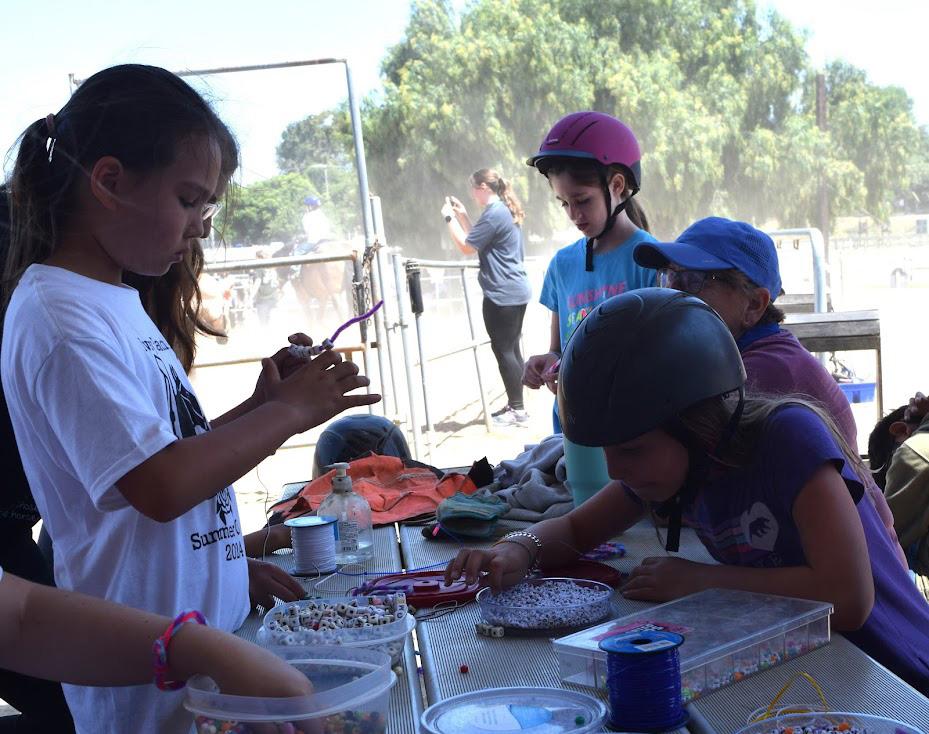
“We are grateful for the work of Ivey Ranch Park Association and want to extend our congratulations for this well deserved recognition,” said Geoff Green, CEO of the California Association of Nonprofits (CalNonprofits), the sponsor for this initiative.
“Nonprofits provide critical services, advocate for our most vulnerable neighbors, and enrich the lives of all Californians. From the childcare program to the soccer team, from the art class to the health clinic, and from the community organizer to the animal shelter, nonprofits make our communities stronger”.
Looking ahead, Ivey Ranch Park Association hopes to continue being a champion in serving the San Diego population, setting the standard for care, compassion, and inclusion. To sustain this mission and reach even more individuals and families in need, Ivey Ranch welcomes volunteers, donors, and community partners to join in its efforts. With continued support, the organization is poised to make an even greater impact for years to come.
For more information or to get involved, visit https://iveyranch.com

iveyranch.com
By Jay Wylie confidentialrecovery.com
As a 22-year Naval Veteran, and some of it spent in command of a warship, I understand what it means to put your own needs below the needs of your company, your mission, and your country.

The “warrior ethos” that is ingrained into all of us during basic training and then throughout our years of service rewards sacrifice.
But what if this warrior ethos causes us to make decisions that unknowingly endanger ourselves, our families, and the society around us? This is the case when it comes to the sinister and baffling disease of addiction.
Addiction, once considered a moral failing, is now universally recognized as a treatable medical condition, just like diabetes or hypertension.
Addiction is progressive and only gets worse when untreated. The shame and stigma associated with struggling with a substance abuse problem is based on outdated beliefs about willpower. Unfortunately, the structure of the military and its emphasis on discipline heightens the stigma for a vulnerable population of

young people who are coping with extreme stress and highly traumatic events.
It’s a recipe for addiction, and it’s simple math that between 10 and 20% of our nation’s servicemembers will struggle with substance use at some point. When you factor in the high instances of post-traumatic stress disorder (PTSD) and many social and cultural challenges that veterans face when transitioning out of the military into civilian life, it makes sense that this population experiences addiction at a much higher rate than their civilian counterparts.
The outpatient drug rehab program that I work for, Confidential Recovery, just celebrated 10 years of helping men and women get sober and stay that way in San Diego, and many of those people are, like myself, veterans.
At our 10 year celebration, (https://bit.ly/4l8mM5Q) we were recognized by many local leaders and given several proclamations by entities like the San Diego County Board of Supervisors in recognition of the work we have done.
We are able to reach and help veterans at our outpatient drug rehabilitation center by “meeting them where they are,” and providing individual counseling, group counseling, and other evidence-based processes to help them abstain from drug use and thrive in recovery.

Just this year we got clearance to accept TRICARE insurance and treat active-duty military members and their families. It was a logical step given our program’s excellent track record with veterans.
Active-duty service members can contact Confidential Recovery directly, (https://bit.ly/3HJnOa7) and their privacy is protected by HIPAA laws, so they do not have to disclose their drug treatment to the military (note: there are potential exceptions to this, contact Confidential Recovery, or visit the Confidential Recovery website www.confidentialrecovery.com for the ful disclosure).
Outpatient drug & alcohol rehabilitation is a manageable commitment that fits in with most people's schedule. It's 3 days per week, and 3 hours per session, for a total of 9 hours per week.
Confidential Recovery utilizes a "social model," which features group therapy, but includes individual counseling as well. Confidential Recovery offers day & night meetings, including weekends, and some sessions can be attended remotely (via Telehealth).
To get more information or to get started with treatment, contact Confidential Recovery directly at (619) 452–1200 for a private and complimentary assessment of your situation. It may expedite the process to have your TRICARE details ready.

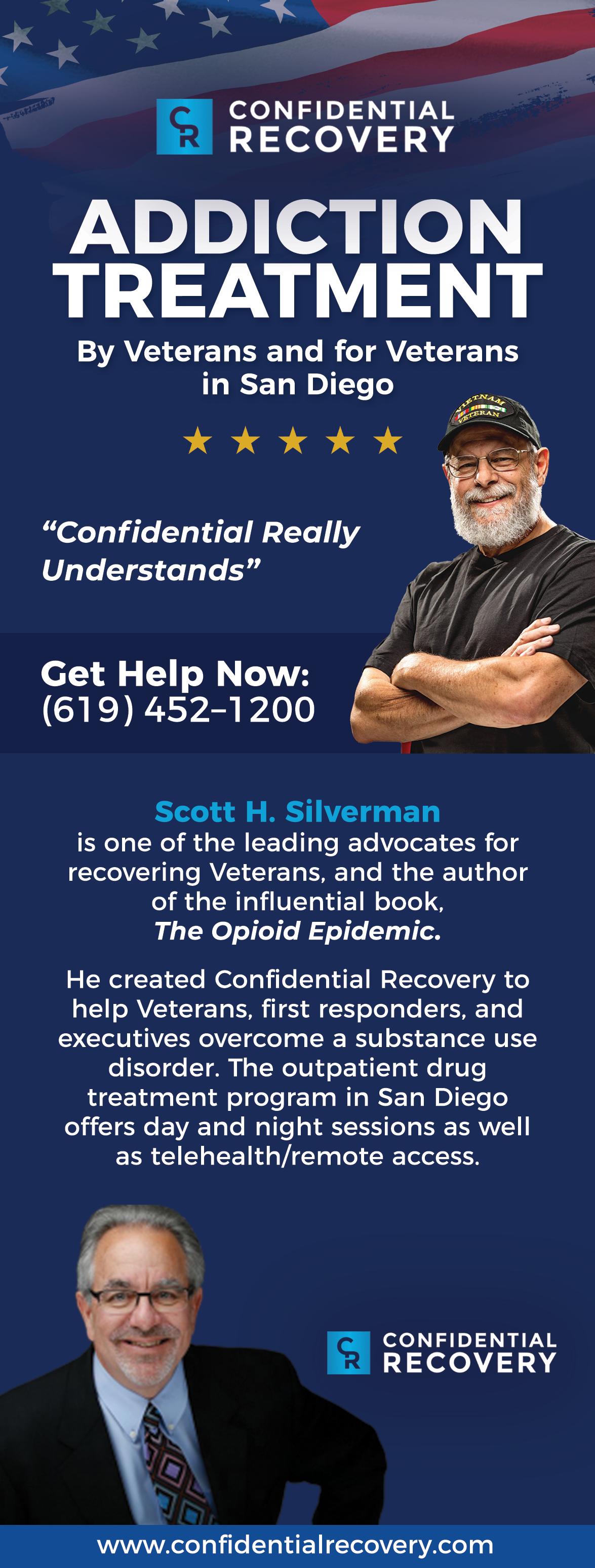


















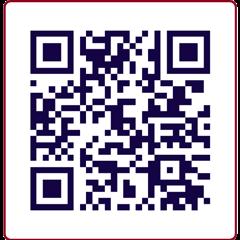




- Patriots to Education: A New Mission
- Make July your month of Independence
- (Reset) Game-Changing Success
- Finding Purpose Beyond the Uniform
- Unleash the Power of Women Veterans
- What to Remember in your Transition
- Finding Purpose after the Infantry
- Getting a Job with a Non-Profit Organization
- AI Prompt Refinement in your Job Search
- Intellectual Property in the Digital Age
- Independent Contractors
- Careers in Law Enforcement




For editorial & monthly columns regarding transition, career advice, tips, workshops, transition to education, entrepreneurship, straight-forward legal tips for military and veteran business owners and more, visit Veterans In Transition.
www.homelandmagazine.com/category/veterans-in-transition

Your Mission. Your Education. Your Pace.
Turn your military training into a mission for justice with a Criminal Justice degree from Los Angeles Pacific University. Our 100% online program is built for military members, spouses, veterans, and dependents, offering flexibility and Christ-centered support from coaches who understand your journey. Whether you’re on base, deployed, or at home, LAPU moves with you. Study anytime, anywhere!*
• Maximize Your Benefits – GI Bill®, Tuition Assistance & Spousal Aid
• Earn Credit for Military Experience – CLEP, DSST, JST & More
• Fully Accredited – Associate, Bachelor’s and Master’s Degrees



Voted #1 Military Friendly School & #1 Spouse School
*LAPU is currently unable to offer distance programs in select states. Visit website for details.



Just like boot camp molded you into the service member you would become, our free on-site and virtual programs mold you into the college student you strive to be.

Boot camp prepared you for the military. We prepare you for college. Scan the code to learn how our programs help enlisted veterans succeed in college

By George Ann Rice Patriots to Education
Educating the next generation and honoring those who have defended our nation are among the most vital responsibilities of a democratic society. Patriots to Education (PTE), a nonprofit initiative, brings these missions together by supporting Veterans, Reservists, National Guard members, those planning to leave the service within a year or so, their spouses and spouses of active-duty personnel in transitioning into meaningful careers in America’s public schools.



Founded by leaders in both the military and education, PTE actively recruits veterans and spouses and guides them through the entire process of entering the education workforce. Services include helping participants explore roles aligned with their skills, navigating certification and licensure requirements, job placement assistance, and follow-up mentorship and career development. The program is currently active in California, Nevada, Florida, and Nebraska, with plans to expand to North Carolina, Texas, and eventually nationwide.
The organization collaborates with a wide range of partners—state and federal agencies, veterans’ services, chambers of commerce and their Military Affairs Committees, military-related organizations (including but not limited to USO, Work for Warriors, ESGR, AUSA, Air and Space Forces Association, Veteran Chambers ofCommerce, Veterans Coalition Groups, CASAs, Reserve Ambassadors), community groups that serve veterans, and political leaders in counties and cities to reach those who have already separated from the service and their spouses and through military installations for those who are considering leaving the service within a year, their spouses, and spouses of active-duty personnel.
Today, public schools across the United States face a growing crisis: a severe shortage of qualified educators and essential support staff. Positions go unfilled—including, but not limited to K-12 classroom teachers, Career Technical teachers, and counselors to IT technicians, school safety officers, bus drivers, operations and maintenance workers and clerical staff. This shortage directly threatens the quality of education, which in turn undermines the strength of our democracy and economy.
At the same time, in addition to those who have already separated from the service, an additional 200,000 service members leave the military each year, many uncertain about their next steps. Patriots to Education offers these individuals and their spouses a chance to continue serving, making a difference—this time, by helping shape the future through education. With proven leadership, mission commitment, a strong work ethic, and a deep dedication to service, military-affiliated individuals are uniquely suited for careers in public schools.
This initiative is a clear win-win: it addresses a national education crisis while offering military families a path to continued purpose and community impact. Veterans and their spouses have already demonstrated their capacity to serve and lead. With PTE’s support, they can now apply those strengths in schools, inspiring the next generation and reinforcing the democratic values they once defended.
By empowering those who’ve served in uniform to now serve America’s youth, Patriots to Education not only honors their legacy—it strengthens the very foundation of our public education system.







By Kevin Dunn
In the United States we have just finished celebrating the 4th of July. It’s a special time to Americans. Not only are there picnics and parades, there is an understanding that over 200 years ago people got fed up with the way things were and pledged their “lives, fortunes, and sacred honor” to making the changes they saw necessary for long-term success as a nation.
July is also halfway through the calendar year, six months away from the hopeful exuberance of New Year’s resolutions. This makes it a perfect opportunity to make July a month to declare your personal independence from the things that are standing in the way of your resolutions and goals. Revisit those grand dreams and declare your independence from the tyranny holding you back – pledging with the same revolutionary fervor as the patriots did to make the changes necessary for your success.
Declare your independence from failure.
How are you doing on the goals you made at the first of the year? Have you fallen so far behind that you have shoved them back into a corner, pointedly ignoring them because you feel that you have failed?
This is the tyranny of failure. It stalks along beside you, assuring you that each and every time you try something new it will not work out and you will not be successful. Often it has helpers – your friends, co-workers, possibly even those closest to you. Regardless, the largest ally of failure is the voice inside of you.
Before you listen to all these voices, ask yourself these three questions:
• Have you given this goal your best effort?
• If you have – what are the reasons you could not be successful? Is it a lack of resources, knowledge or skill?
• How can you learn from where you are and make a plan to acquire what is missing – the resources, knowledge or skills – to allow you to be successful?
The great Roman general Marcus Aurelius asked the question a different way: “Does what’s happened keep you from acting with justice, generosity, self-control, sanity, prudence, honesty, humility, straightforwardness?”
In other words, does what you perceive as failure change your basic nature as a human being? If not, don’t waste time being held back by the failure. Instead use it as an opportunity to learn and grow. Take that learning and growth into the future and continue on to achieve your goals.

Declare your independence from fear.
Television personality Mike Rowe tells a story when he stood before the camera to begin his first night as a host on the shopping channel QVC. He had a product he knew nothing about, he had no experience in live television, and he knew that QVC was not interested in on-air personalities who could not sell products.

In his story, Mike points out a key in declaring your independence from the tyranny of fear: Don’t hide your fear. Acknowledge that you are scared to yourself and to those around you. In Mike’s case, he started out his segment letting the entire television audience know that it was his first time, he didn’t know anything about what the product did, and then he asked them to get involved and help him out.
The audience responded by filling the phone lines to talk about their experience with the products, encouraged by Mike’s willingness to be truthful and authentic with them. Most importantly, they were willing to purchase the products being pitched.
What Mike Rowe did was eliminate the best weapon of fear, which is the uncertainty that comes with doing something that you have not done before. By openly acknowledging the fear he made it clear that he was committed to success and was able to tap into those who were waiting for an opportunity to make that success possible.
Declare your independence from going it alone. The story that Mike Rowe tells also shows the futility of trying to go it alone. Many people set goals – whether they are related to education, fitness or career – then attempt to achieve those goals in the absence of any type of support system.
The self-made man is a myth. Throughout history, leaders who have been successful have had carefully developed support systems around them.

Whether they are formal advisors, technical assistants, or just sounding boards who can help in the development of ideas, a support system is invaluable in helping you reach a goal.
Make yourself accountable to those who care about you. It does not have to be a formal accountability framework; something as simple as online social media can be very powerful. When I first started a fitness program, I posted each day’s run to my Facebook account. This was not so much that I wanted to be sure that my friend saw me run, rather, it was my motivation when I did not want to go run.
Make this July your personal “Independence Month” – a month to recommit to the goals that you want to achieve this year.
Adjust where necessary, learn from the attempts of the first half of the year, banish your fear, and re-engage with your support system.
You have the second half of the year to make your goals a reality, and the experiences of the first half of the year to get you there.

By Barbara Eldridge www.mindmasters.com


If you've gotten this far and can acknowledge that you are capable of being, doing and having so much more, then what are you going to do differently in the THIRD QUARTER?
“Everything you want is out there waiting for you to ask. Everything you want also wants you. But you have to take action to get it.”
– Jack Canfield
Owning and operating a business isn’t something that one undertakes lightly. It requires a huge leap of faith. It’s both exciting to live your entrepreneurial dream, and at the same time scary because there's no guarantee you'll succeed. But the benefits of being challenged physically, intellectually and emotionally as a business owner are in a word: ENORMOUS!
Success is created by the systematic process of setting and achieving progressively more difficult, interesting and rewarding goals. Goals are the things that you make happen when you're awake. Goals are the things which require you to get up, keep your eyes open on the road ahead and work. Goals are the things which often, if not always, come to life providing you work at them.
Your results then are a reflection of your self-esteem and demonstrate what you believe to be true about yourself and what you are capable of. They showcase the depth of your intellect, creativity and passion.
When striving for success, it isn't about toughness and strength it's about alignment with your profound values, beliefs and thoughts. Setting goals, developing a rock solid-plan, and having a significant challenge in place for your entry into this Quarter can and will help reduce the uncertainty and thus the fear, replacing it with control and confidence. That’s what you really want, isn’t it?
Get ready for a new perspective - Set your goals, write them down, set deadlines for their achievement and get busy working a plan. Let your daily watch word be action, action, ACTION!
Remember that your journey is a gift because it provides the wisdom you will need to go out and create positive change in the world. So your commitment is to learn from your past and do better as soon as you know better. Be strong and have courage to change.
“I wish for you a life of wealth, health and happiness; a life in which you give yourself a life of patience, the virtue of reason, the value of knowledge, and the influence of faith in your own ability to dream about and achieve worthy rewards.”
- Jim Rohn
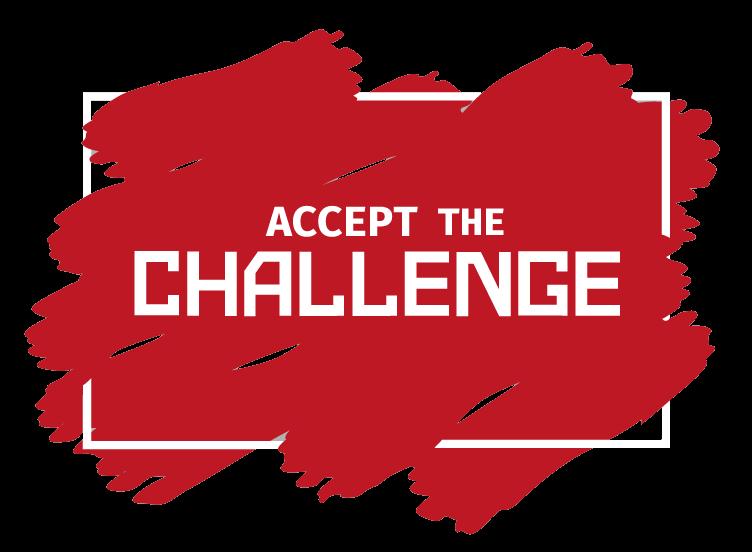
Barbara Eldridge
of Mind Masters an organization that provides business owners a proven, repeatable process that keeps the focus on the business of success. She can be reached at (858) 467-9091 or visit www.mindmasters.com










By Maurice D. Wilson, MCPO (Ret), President/EDNational Veterans Transition Services, Inc. aka REBOOT
Transitioning from military service to civilian life can be one of the most challenging experiences for veterans. It often involves a profound shift in identity, purpose, and worldview. This journey mirrors cognitive exercises like “Find the F’s” and “Find the Cow,” which reveal insights into how we perceive, process, and adapt to information. These exercises offer valuable lessons about the role of mindset, perspective, and awareness in navigating life's transitions, particularly for veterans seeking a new sense of purpose in civilian life.
The Cognitive Lessons: What Do These Exercises Teach Us?
1. The “Find the F’s” Exercise
This exercise asks participants to count all the F’s in a block of text. Most people overlook small but critical details, like the F’s in the word “of.” This happens because:
• Our brains rely on mental shortcuts, scanning for meaning rather than focusing on every detail.
• We filter out information deemed “insignificant” based on preconceived assumptions.
The Lesson: Just as people overlook the F’s, veterans may fail to see the full range of their skills and experiences when transitioning to civilian life. By focusing too narrowly on their military roles, they may miss how their leadership, discipline, and adaptability can translate to civilian careers.
2. The “Find the Cow” Exercise
This visual exercise presents a seemingly abstract image that, with a shift in perspective, reveals a hidden cow. Most participants struggle to see it at first due to:
• A reliance on familiar patterns and expectations.
• Difficulty adapting to ambiguity or incomplete information.
The Lesson: Veterans transitioning to civilian life often feel like they’re looking at an abstract image with no clear pattern. They may struggle to recognize opportunities or redefine their purpose without the structure and mission-focus of the military. The key to success lies in developing an open-minded and flexible approach to uncover new possibilities.

Thinking in Three Dimensions: Words, Pictures, and Emotions
These exercises also highlight the multidimensional nature of human thought:
• Words: The “Find the F’s” exercise underscores how we process language and details. Veterans must learn to reinterpret their military experiences in civilian terms, making their skills relatable to new contexts.
• Pictures: The “Find the Cow” exercise demonstrates the importance of visual and spatial processing. Veterans must develop new mental maps to navigate civilian life, reframing their perspective to identify opportunities.
• Emotions: Both exercises evoke emotions— frustration, curiosity, and satisfaction. These emotional responses mirror the challenges veterans face in transition, where feelings of loss, uncertainty, or frustration can hinder their ability to adapt.
Together, these dimensions reveal the complexity of human perception and the importance of addressing all three when helping veterans find clarity and purpose.
Without structured training or support, many veterans risk missing the “hidden patterns” of civilian life.
Here are some of the most common challenges they face:
1. Rigid Thinking and Blind Spots - Veterans often approach civilian life with the same structured mindset that served them in the military. While this rigidity provides strength in some situations, it can create blind spots, limiting their ability to see new opportunities or reframe their skills.
2. Loss of Purpose - The military provides a clear sense of mission and purpose. In its absence, veterans may feel adrift, struggling to find meaning or direction in civilian life. This emotional void can lead to frustration, depression, or isolation.
3. Difficulty Adapting to Civilian Norms - Civilian workplaces often value flexibility, ambiguity, and self-direction, which may feel foreign to veterans accustomed to clear hierarchies and well-defined roles. Adapting to this cultural shift can be daunting.
4. Emotional and Psychological Struggles - The stress of transition, compounded by the inability to recognize opportunities or purpose, can lead to emotional challenges, including anxiety, depression, and feelings of inadequacy.
The Role of NVTSI Reboot Workshop
The National Veterans Transition Services, Inc. (NVTSI) Reboot Workshop is a vital resource designed to address these challenges. Its structured approach helps veterans “relearn, rebuild, and rebrand” themselves for success in civilian life. Here’s how it aligns with the lessons of the exercises:
Relearn Perspective (Find the F’s)
• Veterans are trained to identify and articulate their transferable skills, much like spotting overlooked F’s in a text. By learning to see the full value of their experiences, they can reframe their military background in ways that resonate with civilian employers.
Rebuild Purpose (Find the Cow)
• The workshop helps veterans “find the cow” by guiding them to redefine their identity and discover new patterns of purpose. It encourages them to align their core values with civilian goals, providing clarity and direction.
Rebrand Identity
• Veterans learn how to present themselves effectively in civilian contexts, adapting to cultural norms and expectations. This rebranding process ensures they can thrive in professional, personal, and community roles.
With the support of programs like the Reboot Workshop, veterans can overcome the challenges of transition and achieve success in civilian life.
Here’s what changes:
1. Recognizing Opportunities - Veterans learn to see opportunities where they once saw obstacles, much like finding hidden patterns in a challenging exercise.
2. Rediscovering Purpose - They redefine their mission, finding fulfillment in new careers, community involvement, or personal growth.
3. Adapting to Civilian Life - Veterans develop the flexibility and emotional resilience needed to navigate civilian environments, bridging the gap between military and civilian cultures.
4. Thriving Emotionally and Psychologically - With a renewed sense of purpose and direction, veterans experience greater emotional stability, reducing the risk of isolation, frustration, or mental health struggles.
Conclusion: Finding Purpose Beyond the Uniform Exercises like “Find the F’s” and “Find the Cow” teach us that perception shapes reality. They reveal how our biases, assumptions, and habits can limit us, and how shifting perspective is key to uncovering hidden opportunities. For veterans, these lessons are especially powerful as they navigate the transition to civilian life.
Without structured support like NVTSI’s Reboot Workshop, many veterans risk missing the “hidden cow” of civilian life—failing to recognize their value, redefine their purpose, or adapt to new challenges. However, with the right training, they can unlock their full potential, embracing civilian life with clarity, confidence, and purpose.
Ultimately, the journey of transition is not about erasing the past but integrating it into a broader vision for the future. Just as finding the cow transforms how we see the image, finding purpose transforms how veterans see themselves—and their place in the world.

Maurice D. Wilson, MCPO (Ret), President/ED - National Veterans Transition Services, Inc. aka REBOOT To learn more visit www.nvtsi.org or to sign up for the next REBOOT Seminar visit www.nvtsi.org/events/categories/seminar
By Lori Noonan www.NonProfitPros.org
Women are the fastest-growing population within the U.S. military veteran community. They are leaders, innovators and public servants - yet when the uniform comes off, many face a challenging path into the civilian workforce. Despite their proven capabilities, women veterans experience higher unemployment and underemployment rates than both male veterans and nonveteran women. According to the U.S. Department of Labor, unemployment for women veterans stands at 5.9% - nearly twice that of their male counterparts. This disparity is more than a data point; it reflects the structural and cultural barriers women veterans encounter as they navigate career transitions.
Military women often leave service with deep expertise, leadership experience and unmatched resilience. But their skills are not always understood, and are often undervalued, by civilian employers. Many women veterans report difficulty translating their military experience into civilian terms, being overlooked for leadership roles or facing gender-based bias in hiring processes. Others face challenges with underemployment, in which they accept roles that don’t reflect their capabilities or aspirations.
Mental health plays a key role too. Women veterans are more likely to experience PTSD, depression and anxiety, yet transition-assistance programs rarely offer genderspecific or trauma-specific employment support. As a result, many women struggle in silence, navigating their career paths without tailored guidance or community support.
Despite these challenges, success stories abound. Across industries - from finance and tech to healthcare and education - women veterans are rising as powerful contributors and changemakers. Their success isn’t accidental; it’s often fueled by intentional mentorship, inclusive hiring practices and veteransupportive workplaces.
Community engagement is critical. Local events that can bring women veterans together —through mentorship, networking or recognition ceremonies create space for connection, visibility and mental-wellness support. These gatherings strengthen career networks and oster a sense of belonging. When women veterans feel seen, heard and supported, their ability to lead and thrive multiplies.

Women veterans deserve intentional, community support, which requires strategic action. Those actions might include:
• Tailored, Workforce-Transition Support:
Veteran-serving programs should strive to meet the specific needs of women veterans by offering oneon-one coaching, providing childcare solutions and fostering mentorship from other women who’ve successfully transitioned from active duty to the civilian workforce.
• Integrated Mental Health & Career Services:
Those committed to supporting veterans should seek to provide holistic support that promotes emotional resilience and career readiness. It is essential that said services include resources that focus on posttraumatic growth.
• Commit to Supporting Veterans:
Organizations must intentionally invest in military cultural competence, actively address gender bias in hiring processes and purposefully create environments that demonstrate support for veteran employees.
• Showcase Successes to Boost Visibility:
Sharing the stories of successful women veterans in leadership and technical roles inspires others and shows employers the tangible value of veteran talent.
• Better Data for Better Decisions:
Providing and using more detailed labor market data – particularly segmented by gender and race - will help shape better and more inclusive policies and employment strategies.
Women veterans are ready to lead. Let’s make sure they have the opportunities and support they deserve. When we invest in women veterans, we strengthen our workforce, our communities and our country.
Lori Noonan is a U.S. Navy veteran, military spouse, and seasoned nonprofit executive with over two decades of experience driving social impact.
As the founder of Capacity Builders, a consulting firm dedicated to elevating nonprofit excellence, and the Chief Growth Officer at Veterans Bridge Home, Lori leverages her expertise in fundraising, strategic planning, and governance to empower organizations serving veterans and their families. A certified Standards for Excellence consultant and BoardSource-trained governance expert, she is committed to bridging gaps in veteran employment and advocating for the unique strengths of women veterans in the workforce.

By Eve Nasby eve@infused.work

Memory is a funny thing. We tend to remember things we’d like to forget, and we forget those things we thought we’d always remember.
As you transition out, it’s important to remember the accomplishments, experiences and friendships that will help you in this next chapter. When you’re focused on the “what-if’s” of transition, it moves your focus to the future instead of the past. By remembering all you have done in the past, you can be prepared for a new future that is satisfying and rewarding.

Use this acronym to “REMEMBER” your experiences in a way that sets you up for success in transition.

mbrace the fear of change.
FEAR is False Evidence Appearing Real. When you have the natural fears of transition, where is that fear rooted? Not making enough money? Not speaking the right ‘civilian’ language? Not being groomed enough for civilian employment?
Fear not. Write out a list of the raw fears that you are facing in transition. Find a mentor who is experienced in helping those in transition and discuss these. You will be surprised how much ‘False Evidence” you have in your mind that appears real.
Start planning 12-18 months out. If you fail to plan you plan to fail. Do your research. Do some soul searching. Where do you want to be location-wise? How important is the salary number? Do you have a certain work culture in mind? Write these down clearly and specifically. Then you have a guide to help narrow your choices to those that fit what you really want.
Engage your network.
After you write out your plan, tell others about it. Want to work for Subaru in Lafayette, Indiana? Jump on LinkedIn and find the head of HR. Ask for an informational interview. See who else knows people who work at Subaru and engage them for ideas of what it’s like to work there and the best way to land a job.
Move.
Remember who you are and why you decided to serve.
Your training, your ability to complete a task, to be on time and be a part of a team are all things that will add value to any organization. Remember why you decided to serve. Maybe it was to be a part of something better than yourself, or perhaps to escape from a fear of what you thought you’d be stuck with. Maybe you wanted a way to get an education or see the world.
Whatever the case, you were decisive and did it. You experienced change and can embrace challenges. You became part of something bigger than yourself. Remember that.
The paralysis of analysis can be…paralyzing. With so many companies, jobs and choices make it easy to freeze up with indecision. But you have a plan! So, start moving towards what that says. If a choice doesn’t align with your plan, forget it! Keep moving while making decisions that align with what you said you want. That will get you to the job/career you want and love.
Be accountable.
Transition is not successful if you go it alone. Be accountable to your mentor. If you are struggling with interviews or networking, be honest with yourself and with your mentors and friends.
People love to help but it is often difficult to ask for help. Just ASK. Do what you say you’ll do. Do what they suggest you do.
Elevate your mind.
Look up. Literally. You’ll probably get rejected at some point in the process. Everyone does. Maybe you don’t hear back from a company after a great interview. Don’t assume rejection, but be okay if it is. Keep your head up. Elevate your mind. Follow up if you don’t hear back about a job you want. Remember, you’ve made it through boot camp and far worse. How’d you get through that? Your network, resources, friends, books, and faith will keep you elevated if you allow them to! It’s not trite to say that when one door closes, another one opens. Elevate your mind to really believe that.
your thoughts.
It’s common to think you don’t have the skills and experience necessary for civilian jobs. That’s not the case. If you think it is, you haven’t reframed your experiences and accomplishments in a relatable way to civilian employers.
Your mentor and network can help you reword your skills and accomplishments in the military into a story that’s incredibly valuable to employers.
Reframe how you see yourself. Ok, so the dress code and language is different in the civilian work world. No problem. Start small. Get used to removing “Yes Ma’am” or “Yes Sir” from your daily lingo. Avoid using acronyms that only the military understands. Start practicing interviews with your peers. Get feedback, and keep reframing until you get comfortable.
Remember, you have what it takes! Remember these tips and put them into practice to help navigate your best path in transition.


Finding a job in the civilian workplace may seem easy at first. After all, you have learned skills, practiced leadership and demonstrated initiative that will make you successful wherever you go.
The reality, though, is that it can be difficult. In fact, it can be downright depressing demotivating and you may feel totally disillusioned. We can help
In our Veterans In Transition archives you will find helpful and informative articles about what’s next in transition, veterans in business, career, advice, tips, workshops, transition to education, entrepreneurship, veteran franchises, legal tips & resources for veteran businesses and much more...
For assistance in your journey please visit: HomelandMagazine-Veterans-In-Transition homelandmagazine.com/category/veterans-in-transition
Dealing with disability and seeking a new mission, this Army veteran attended a DAV job fair that launched his civilian career
By Liz Stetler
On the day before the DAV job fair in Phoenix, Chris Peer’s plan was to drive from Arizona to Colorado for a ski trip with an old Army buddy. But when nerve pain from a lower back injury he sustained on active duty flared up and caused the left side of his body to go numb, Peer knew skiing was out of the question.
His service-connected disability was not the only challenge Peer was facing after seven years of military service. He was also having difficulty finding meaning in his civilian life.
“After separating, you realize just how deeply ingrained the military lifestyle and ethos are,” Peer said. “That sense of purpose is all-consuming in the military. But once you leave, you’re on your own.”
Peer received an email about the DAV job fair in his area, and initially, he hadn’t planned on attending. But when the trip to Colorado was scrapped, new opportunities opened up.
“Long story short, I ended up canceling that ski trip and going to that job fair,” he said. “I’m glad I did, because that’s where I found my current role.”
Now an operations apprentice at Wells Fargo Corporate & Investment Banking in Charlotte, North Carolina, Peer supports fixed-income sales and trading with pension funds, college endowments and other institutional investors. The position is a one-year apprenticeship sponsored by the Department of Labor.
Peer’s career has taken some surprising turns, like going into the office every day. “My dad was a bond salesman for about 30 years on Wall Street,” Peer said. “I wanted to do the furthest thing from that, so I joined the military.”
Peer served in the Army from 2016 until 2023.
“I’ve always been interested in history and international relations and to serve a purpose greater than myself,” he explained. But after seven years of “running, jumping and, deploying all over the world,” he was ready to transition out of the military and into a civilian career.


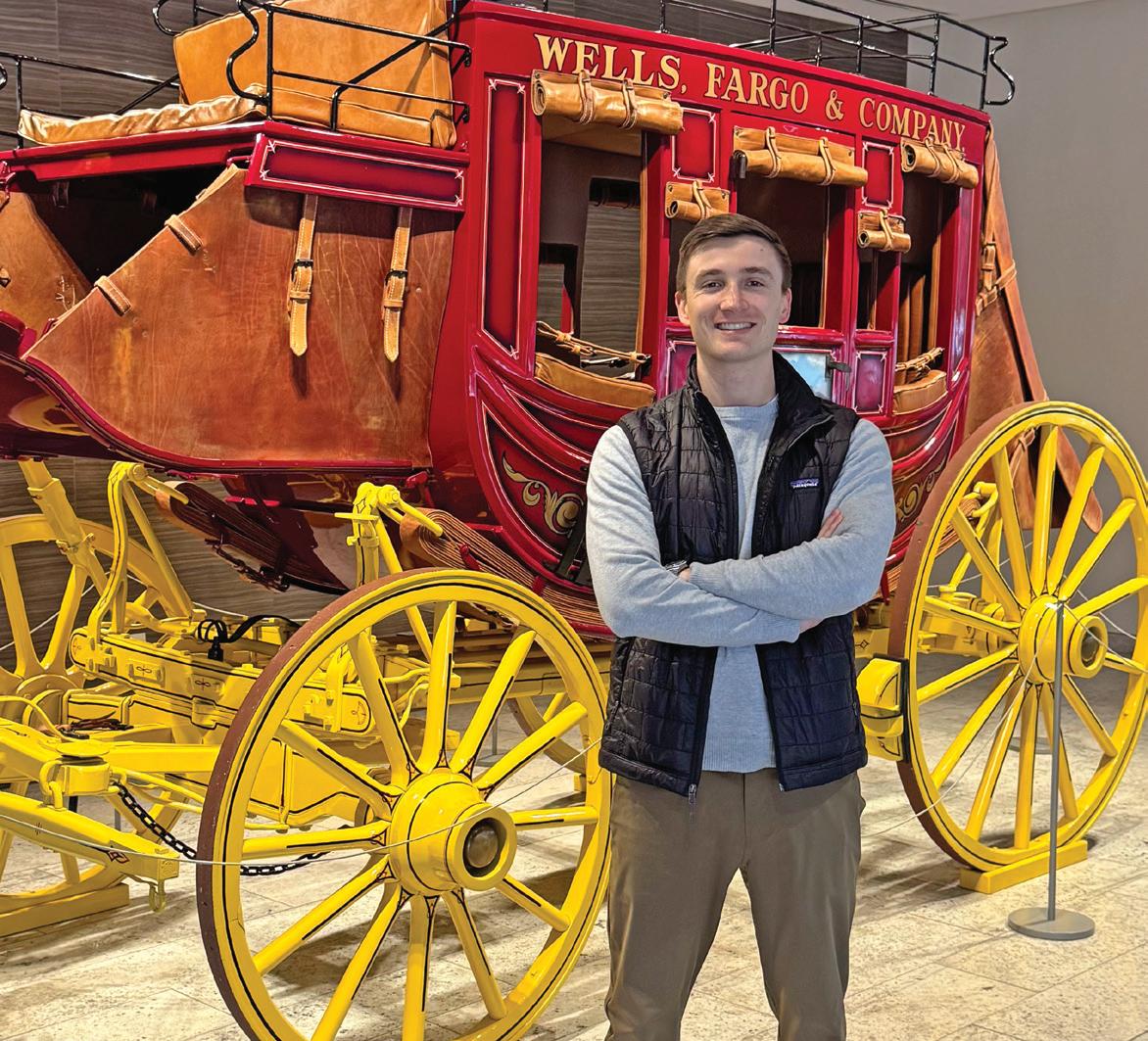


During the transition, Peer considered graduate school and even attended industry conferences, but he continued to keep his career options open.
“I had one or two job offers that, if I’d taken, I might have been selling myself short,” Peer said. “It was stressful, not being employed and trying to regain that sense of purpose.”
He found it at the DAV job fair.
“The companies there were helping veterans, sharing their mission, providing information and doing their utmost to bring veterans on board,” Peer said. He spoke to recruiters at multiple booths, but the Wells Fargo financial apprenticeship stood out the most.
“Meaningful employment is key to a veteran’s success after service,” said Lamarr Couser, national employment director at DAV. “For some, like Chris Peer, an apprenticeship jump-starts their career; for others, it’s a full-time job or further education. DAV job fairs offer a range of opportunities for veterans, military spouses and active-duty personnel—helping them network, explore careers and take that first step toward their next chapter.”
“I felt like I was a little bit behind in the civilian world,” Peer said. “This apprenticeship is very meaningful. I am able to work and learn at the same time, doubling down on the skills that I learned in the military while building up those skills that I need.”
Since joining the program, Peer has noticed differences and similarities between the finance industry and the infantry.
“There are more subtleties to corporate discourse,” he said. “There’s no shortage of acronyms here in the financial industry. I’m trying to replace my military acronyms with banking acronyms.”
Navigating the career journey with a service-connected disability also requires special consideration, Peer said.
“The challenges to overcome are different, depending on your disability,” he said. “Conduct an honest analysis of what is a best fit for your career aspirations. Ask yourself, ‘What are my strengths? What experiences do I bring? And what are my constraints?’ Understanding those criteria will put you in the best place to succeed.”
For Peer, that criteria led him to his corporate mission.
“I actually enjoy coming into the office, being immersed in capital markets on the trading floor, learning from financial professionals with decades of experience combined, and having an opportunity to leverage skills and experiences from the military to benefit clients and stakeholders in the financial industry,” he said.
“I’m grateful to the folks at DAV for giving veterans like myself the opportunity to succeed and to thrive. My disabilities were preventing me from enjoying my life. I pushed through to go to the job fair, and I’m glad I did.” n



Franchise Wealth Consultants is dedicated to helping you achieve your entrepreneurial dreams and secure your financial future through business ownership.
Our Ideal Franchise Candidates Include:
• Aspiring entrepreneurs eager to control their future.
• Professionals aiming to transition from the corporate world.
• Investors seeking semi-absentee or passive income opportunities.
• Experienced operators looking to expand their portfolios.
• Veterans, public service professionals nearing retirement, and former corporate management professionals represent the largest segment of our franchisee base.
• Franchising offers a proven business model and brand recognition
• FWC helps you successfully navigate the world of franchising, which can be overwhelming if you are not familiar with the process.
• We have access to the largest inventory of top-performing franchises through the IFPG network, the largest franchise network available.
Our Consultations &
Why is it free? Our consultation comes at no cost to you because we’re compensated by the franchise companies—not by our clients. This means you get unbiased guidance and support, with your best interests as our top priority. So, there is not only no fee, but no obligation on your part.
• Always personalized recommendations and expert guidance
• We’ll help you find the perfect franchise that aligns with your lifestyle, personality, goals, and budget - at no cost to you
• Clear, honest answers to your questions
• Need to explore financing options for your franchise? We can connect you with trusted partners.
We’re more than just consultants. We are your strategic partner.




By Kevin Mills Jr. Director at Travis Manion Foundation
1. Network! Go volunteer for an organization, reach out to your current network, and get on LinkedIn specifically!
2. Get a profile picture, add your about me and experience.
3. Start connecting! Most organizations have staff page or staff directory on their website. Start adding individuals who work in the space you want to be in. Connect, shoot them a DM, you would be surprised how many people are willing to share helpful insight or their story.
4. Start researching organizations that interest you. As a veteran or military supporter, what specific cause speaks to you? Veteran-led Youth mentorship? Combatting veteran homelessness? Veteran led disaster relief? There’s a million organizations out there.
5. Search for jobs by organization and type. Many jobs
6. Understand the lingoVSO - Veteran Service Organization
Programs - The products and services delivered by nonprofit organizations are typically referred to as programs. Strongly connected to the organization's mission, programs are a set of resources and activities conducted to achieve specific outcomes. A nonprofit may offer one or more programs.
Development - Nonprofit development encompasses all of the strategy, planning, and implementation involved in building relationships, nurturing connections, and creating sustainable communities of support around an organization.
501c3 - Not an entity, but a tax status associated with non-profit organizations for federal tax-exemption. This is a very common status, however there are different types of 501c-Statuses, research your organizations!
7. Get a good resume and cover letter! Most vets have the “Responsible for X number of soldiers and X dollaramount” However, have an organization look it over and make sure to differentiate yourself from every other Squad Leader/Executive Officer out there! hireheroesusa.org and homelandmagazine.com are great resources for vets.
8. Apply with Violence of action. Many of these positions go quickly and fill up fast. Keep your resume and Cover Letter up to date.
9. Keep applying, keep interviewing. It will take a lot of time and effort (I applied to about 60 Jobs in a variety of fields before I got picked up in the nonprofit space)
10. Have that tactical patience and continue to network. It’s not going to happen overnight.

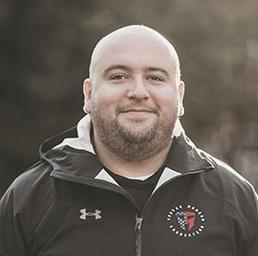
Kevin Mills Jr. Director at Travis Manion Foundation
Nonprofit ProfessionalI I Army
Veteran I Complex Problem Solver Positive Energizer


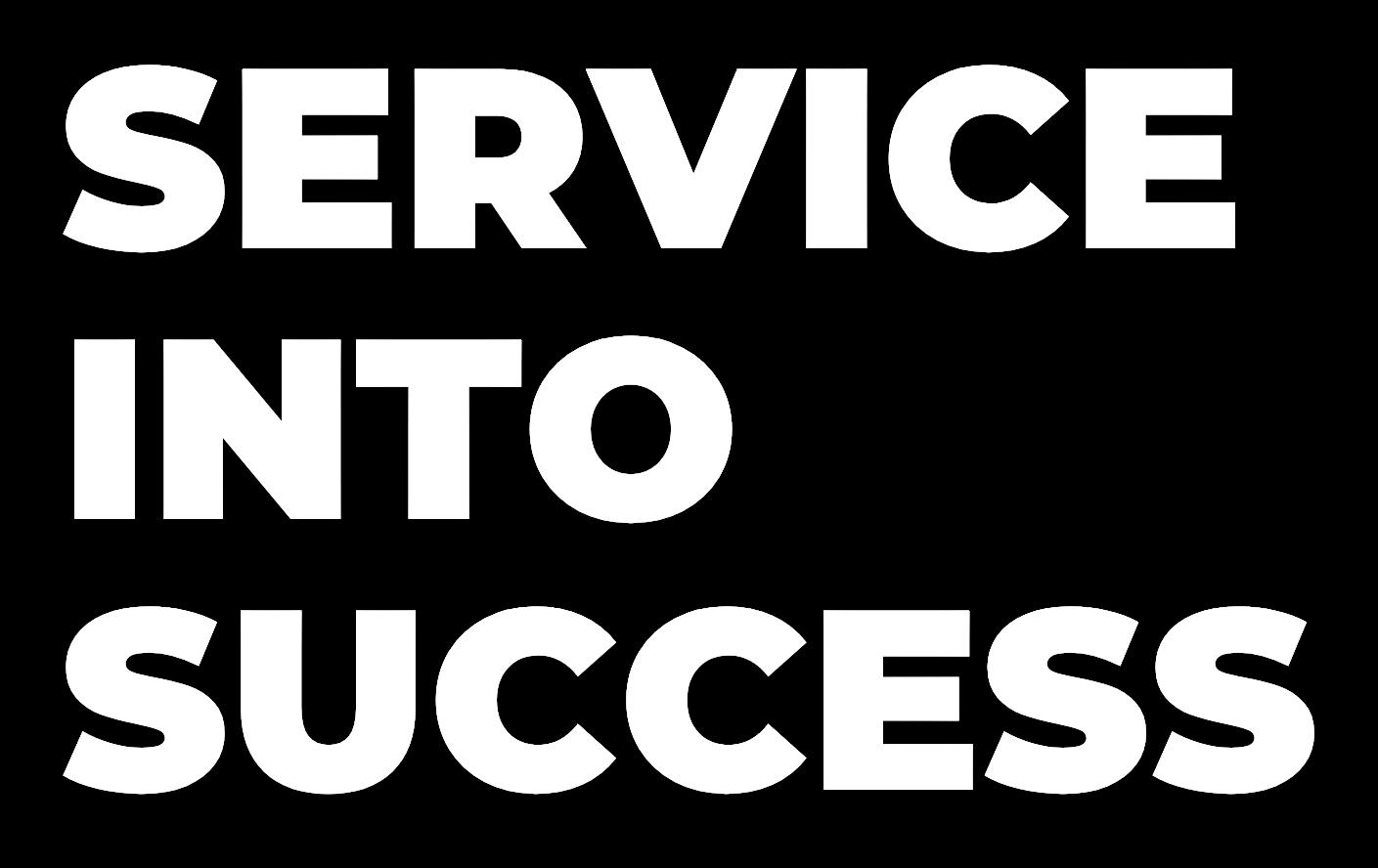




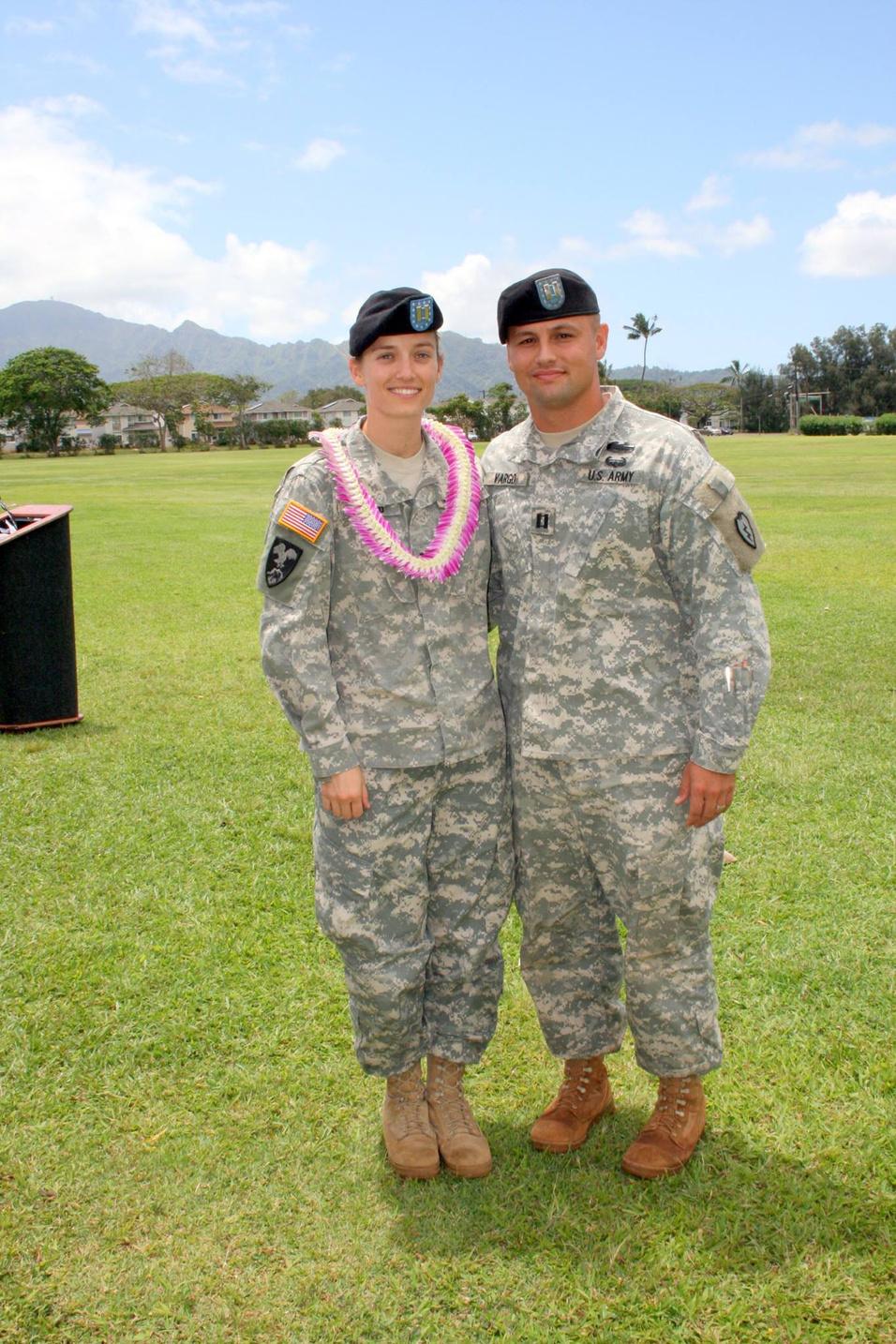
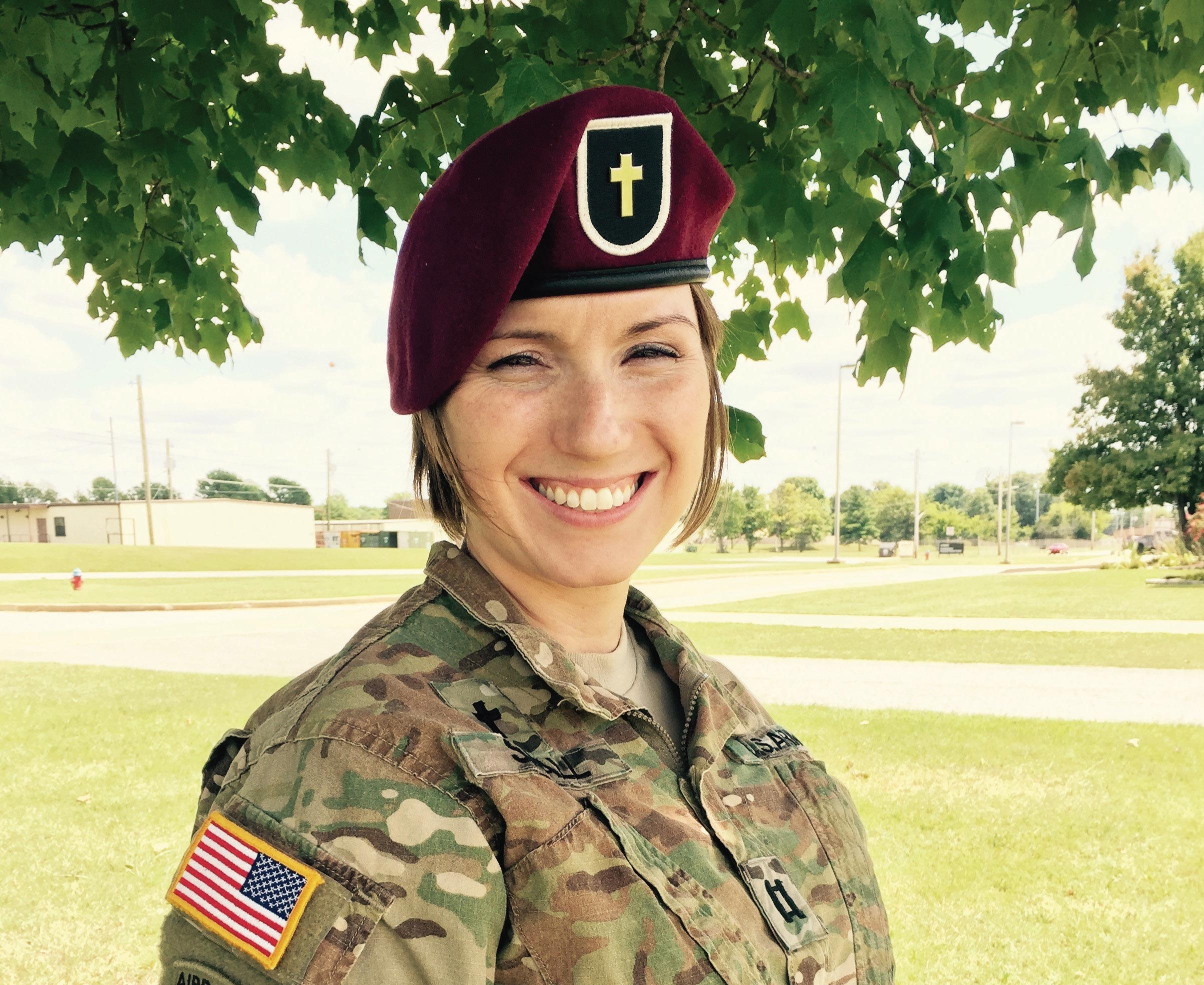



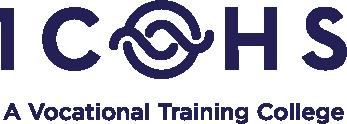
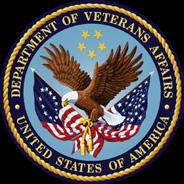





By Paul Falcone PaulFalconeHR.com


I recently invited guest contributor Jamie Walters, Career Transition Coach at the outplacement firm, Challenger, Gray & Christmas, to write a guest article for my blog (www.paulfalconehr.com/blog). She did a wonderful job and got a lot of social media attention, so I thought it would be worth sharing this shortened version with Homeland | San Diego Veterans Magazine – Paul Falcone
SEO-proofing your resume to stand out (electronically) from your peers when applying online for a position is a smart strategy when in job search mode. Job seekers aren’t really writing resumes exclusively for human consumption anymore—they’re likewise writing for a robot. Specifically, an ATS (Applicant Tracking System), which acts like a digital gatekeeper sorting resumes before a human ever sees them. The good news is you don’t have to choose between being “digitally optimized” and being “authentic.” With the right structure, keywords, and a little bit of charm, your resume can sail right on through any ATS and also still sound like you.
To start, most ATS platforms scan resumes for job-specific keywords. If the language in your resume doesn’t match the language in the job posting, it might never make it to a real person. To address this, use job postings as your cheat sheet. Pull out the most-used terms and mirror them in the Summary, Core Skills, and Experience sections of your SEO-enhanced resume. Here's how to do this in ChatGPT:
1. Write the following prompt into ChatGPT:
“Help me identify the BEST SEO words from this job description and then help me reword my Summary, Core Skills, and Experience sections."

2. Press Enter (i.e., the Up Arrow)
ChatGPT will then respond as follows:
Sure! Please paste the job description you'd like me to review below, and I'll:
• Identify the best SEO keywords and phrases to use.
• Help you rewrite your Summary, Core Skills, and Experience sections using those keywords to align with the job and improve your visibility to recruiters and applicant tracking systems (ATS). Go ahead and drop the job description when you're ready.
3. Copy and paste the job posting into the ChatGPT prompt (open area) that follows.
Then press Enter again. ChatGPT will then provide the following:
• A list of the top SEO keywords and phrases that applicant tracking systems (ATS) and recruiters will look for based on the job description.
• A proposed Professional Summary that matches the job posting.
• Proposed Core Competencies language that matches the job posting.
• Proposed Professional Experience content that matches the job posting.
Next, ChatGPT will then prompt you to copy and paste your resume into the next field as follows:
If you can share your current resume text or your previous job titles and achievements, I’ll tailor this more closely to your voice and experience. Would you like to do that?
4. At that point, copy and paste your current resume into the open ChatGPT field.
Once your resume is uploaded, press Enter, and ChatGPT will respond as follows:
Excellent—thank you for sharing your resume. Let’s now refine and optimize your Summary, Core Skills, and Experience section intros using strategic keywords from the job description while highlighting your strongest, most relevant achievements.
5. ChatGPT will then compare your resume to the job posting and then redraft the Professional Summary, Core Competences, and Professional Experience sections just as you instructed it to so that they are SEO-optimized and ATS-friendly.
Finally, carefully review the suggested language and incorporate the changes you’d like to see in your SEOenhanced resume. Remember, though, that AI can make mistakes or miss key points. This is your resume and your employment history, so edit the content carefully. Likewise, be sure to omit ANY and ALL personal information. Some AI tools may store your information, potentially raising privacy concerns.
Another key focus area lies in formatting. While columns, tables, images, and fancy fonts may look great on paper, they can confuse ATS software and cause your resume to be misread or worse: Rejected. Stick to clean, simple layouts with standard fonts like Arial or Calibri. Use bold for section headings, avoid graphics, and save your resume as a .docx or PDF file. If you need help, try this ChatGPT prompt:
“Reformat this resume to be ATS-friendly. Remove columns, images, and any formatting that ATS can’t read.”
Creating a sense of authenticity or personality is an important part of customizing your resume, but if you need help, ChatGPT can lend a hand as well responding to a prompt like:
“Add a personable sentence to my resume summary that shows character and culture fit, without being too casual.”
Whether you’re submitting your resume through an ATS or handing it to a hiring manager in person, always remember that it's about balancing optimization and authenticity. With the right combination of keywords, clean formatting, and a personal touch, your resume can pass the ATS with flying colors while still standing out to the humans reading it.
You can connect with Paul on LinkedIn at www.linkedin.com/in/paulfalcone1
Paul Falcone (www.PaulFalconeHR.com) is a management trainer, executive coach, and bestselling author on hiring, performance management, and leadership development.

www.HarperCollinsLeadership.com
Straight-forward legal tips for Military and Veteran Business Owners
By Kelly Bagla, Esq. www.BaglaLaw.com

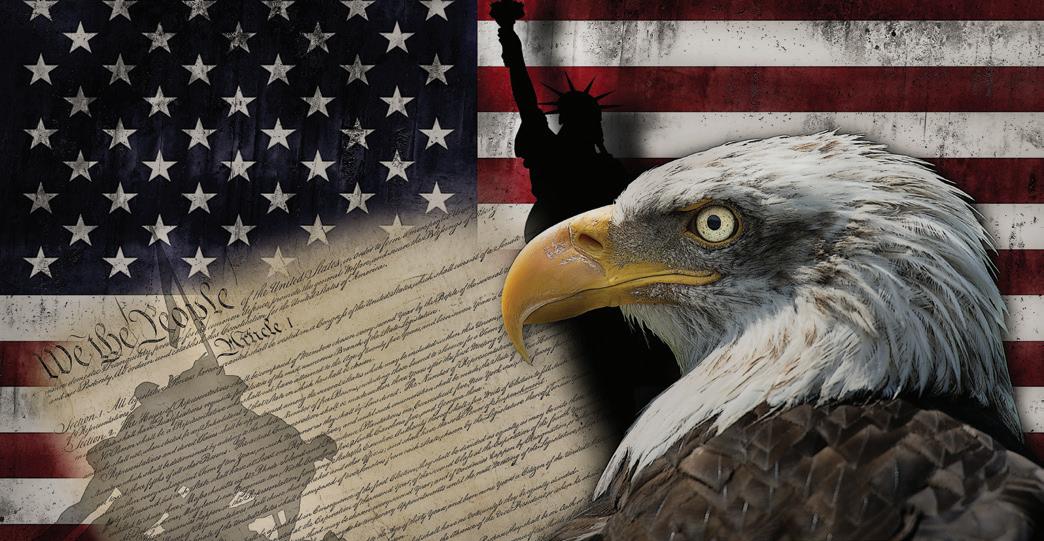
The digital era has facilitated the creation and splitsecond distribution of intellectual property. A blogger instantly communicates with followers. Online journals publish at the click of a key. Digital platforms have become the primary vehicles for generating, delivering, and receiving intellectual property. But these advances have also made it far easier for those who wish to violate your intellectual property rights.
Intellectual Property (IP) is an important component of your business assets. Historically, copyright was designed to protect intellectual property that was “fixed in a tangible medium of expression,” like a book or musical score. But with technology has come the new category of IP — digital intellectual property. Copyright protection in the United States has expanded to encompass creative and inventive works in digital form, including software, websites, online content, digital art, and music files protected by laws like copyright, patents, and trademarks.
Below are common examples of digital IP and how they can be legally protected.
• Trademarks: These include designs, words, logos, signs or symbols that are distinct enough that they distinguish the business or product using that mark in connection with digital products or services.
- Protected by registering your Trademark.
NOTE: Even if your logo is only used online, you can and should consider trademarking it to protect your brand and its unique identity in the online marketplace.
• Online Content: For example; website content, online articles, and blog posts.
- Online content which is owned by the individual or business can be protected by copyright.
NOTE: Specific images, videos and design elements belonging to other parties may be licenced or used by permission. They are not considered your digital IP.

• Software: For example; a unique algorithm used in a video game, or the source code of a popular application.
- Software code can be protected by copyright.
- Patents can protect the underlying technology or functionality of digital products like unique algorithms or software processes.
• Music: This refers to digital music files, including the composition and recording.
- Digital music files can be protected by copyright.
• Videos: Movies uploaded to streaming services or videos created for a online platforms.
- These can be protected by copyright.
• Digital Art: This includes images, animations, and other forms of digital art.
- Digital art can be protected by copyright.
The above is a partial list and does not consider any legal exceptions. You should always consult with your business lawyer about how to protect your specific digital IP.
The growth in digital technology and IP have given rise to challenging legal issues. Two fascinating questions regard artificial intelligence and domain names.
The use of AI presents a new paradigm for protecting digital intellectual property. Copyright law requires "human authorship" for protection, according to the US Copyright Office. Artificial intelligence is not human. So, can AI artistic creations be copyrighted? The question has not been completely settled. Much legal debate continues. But the currently AI is not given the status of a creator. And thus, works created entirely by AI can not be copyrighted.
However, if there is sufficient human input and creativity, AI-assisted works can potentially be copyrighted on a case-by-case basis.
Another intriguing question arises regarding domains. For decades business owners have understood that their domain names are valuable. However, from a legal standpoint, domain names aren’t automatically considered intellectual property since don’t represent a form of creativity, invention, or branding in the same way that a patent or trademark does. But, there are certain circumstances in which a domain can be trademarked and considered IP. When a domain name is used to identify and distinguish goods or services and is associated with a business in the minds of consumers, it can be protected as a trademark. Specifically, if a company uses a domain name that is also a registered trademark, the domain name can be protected under trademark law.
Conversely, choosing a name that closely resembles someone else’s trademarked name can lead to legal challenges and potential loss of your domain. A domain name can infringe a trademark if it causes confusion, dilutes the trademark’s distinctiveness, or is registered in bad faith.
Obtaining legal advice is essential to navigate the challenges of domain names as trademarks. And remember that whether you can trademark your domain or not, your domain name is a valuable business asset.
As with all your business assets, it’s critical to properly protect your digital IP. If you need help determining the best digital IP protection strategies, we can help. Please visit my website at www.BaglaLaw.com
Disclaimer: This information is made available by Bagla Law Firm, APC for educational purposes only as well as to give you general information and a general understanding of the law, and not to provide specific legal advice. This information should not be used as a substitute for competent legal advice from a licensed professional attorney in your state.

Bagla, Esq., and her team at Bagla Law Firm, APC, a Business Formation and Asset Protection firm, have over twenty years of experience protecting real estate for rental owners. They customize your asset protection plan to ensure that your rentals are protected in case of a lawsuit.
By Hadley Wood www.hlinwood-insurance.com

On the heels of this 4th of July celebration, we mark nearly 250 years of Independence in our great nation. Americans strongly value our freedoms and this is very evident across all sectors of businesses as well. Being a Business Owner myself, I appreciate the freedom to run my operation as I like and I do love my independence from corporate oversight but that doesn’t mean I can ignore the rules and laws of my state.


Many Business Owners may decide to bring on Independent Contractors or 1099 Subcontractors to help them with their everyday business operations. Everything from Marketing, Bookkeeping, IT Services, Virtual Assistants and more can now be a very easy, affordable and accessible way to effectively run the business without the cost of full-time employees on the payroll. Before you consider doing this you will need to make sure that the 1099/Independent Contractor is a true Independent Contractor. Just because you decide that is what you want to classify them as, does not mean that the State will classify them as so. There can be huge consequences to incorrect classification of employees including back taxes, fines, back work comp payments and more. Ignorance is not an excuse and as a Business Owner, compliance with the laws and regulations of your state is mandatory to reduce risk to your business.
• Information Sheet: (DE 31) edd.ca.gov/siteassets/files/pdf_pub_ctr/de231.pdf
• A great tool can be found at (DE 38) edd.ca.gov/siteassets/files/pdf_pub_ctr/de38.pdf
This is an effective checklist to review that can help you determine whether an employee is a W2 employee or a true 1099 Independent Subcontractor.
Once you have determined that you do in fact have 1099 Independent Subcontractors, you will need to have tight, and SIGNED Agreements with each of them that includes specific language to release you of liability should they cause damage, steal intellectual property from you or commit fraud that may affect your business or your clients. You should have a Business Attorney in your pocket to assist you with this as a solid Agreement can not only prevent frivolous claims against you but can show that you have done your due diligence in conducting proper business protocol.
You should also require the 1099 Subcontractor to carry their own insurance (1M limits minimum), issue a Certificate of Insurance to you, name you as Additional Insured (to their policy) with Primary Non-Contributory and Waiver of Subrogation endorsements in your favor. This has become very standard and should not be a big ‘ask’ to them. Part of your due diligence as a Business Owner will be to update and check these annually and keep accurate records of the certificates.
Independent Contractors can help your business flourish and can save you a lot of headache and money. And being an Independent Contractor is a wonderful gift and opportunity that our great country allows us. We all have a personal responsibility to respect and abide by the laws surrounding this and take all necessary actions to ensure compliance so we can keep our freedoms intact.


You’ve served your country, now serve your community!
Military and law enforcement have had a longstanding relationship with overlaps in training exercises, equipment, and, most important, personnel.
It is not uncommon for a service member to make the jump from the military to law enforcement as both professions look for the same characteristics; leadership, fidelity, chain of command, and teamwork are all common themes in both professions.
Quite understandably, many American military veterans often gravitate to a career in law enforcement when the time comes to rejoin the civilian workforce.
The two professions have many fundamental similarities; from the uniforms they wear with pride, to the firm command structure they serve under, to great personal risk they endure while protecting those who cannot protect themselves.

The following agencies are actively hiring & proudly support our veterans, active military and the families that keep together.





By Holly Shaffner


Changing careers can be exciting, exhilarating, and filled with trepidation. Meet Officer Cindy Ovares who has made the transition numerous times – from active-duty service member, to student, massage therapist, teacher, and now police officer.
The life experience she gained in those previous longterm jobs set her up to be successful today. She is doing what she’s always wanted to do – have a career that is challenging and rewarding.
Cindy was like many seniors in high school as she contemplated what she would do after graduation. When the Navy recruiter called the house looking for her brother, the recruiter instead got an eager, independent 17-year-old woman who wanted to find adventure. Just a few months later, she was off to “see the world” and start her first career.
As an Aviation Machinist’s Mate, Petty Officer Ovares was a jet engine mechanic. It was a male-dominated job, and she wanted to prove that anything a man could do, she could do better. She attended military schools in Florida and Virginia to learn her trade, and was later stationed in Lemoore, California. She was attached to VFA-22, an F/A-18 Super Hornet squadron, that deployed on ships. After serving four years on active duty, she earned Post 9/11 GI Bill education benefits, and chose to leave the Navy to attend college.
After completing her bachelor’s degree in Secondary Education and being a fluent Spanish speaker, she was hired to be a high school Spanish teacher. The job was gratifying; but also, under resourced, understaffed, and had little room to grow professionally. She wanted something new and challenging, was drawn to the community where she grew up, so, in her late 30s she applied to be a police officer.

“Being able to talk to people, figure out what they are going through, and what they need is a huge portion of the job. I enjoy interacting with the public, and engaging in what I call verbal judo.”

Officer Ovares was accepted to the San Francisco Police Academy and has been an officer for the last three years. She is a foot patrol officer working in the Tenderloin District – a 50-block area that has a storied history, and has been known for homelessness, drugs, and crime.
“Being able to talk to people, figure out what they are going through, and what they need is a huge portion of the job. I enjoy interacting with the public, and engaging in what I call verbal judo,” said Officer Ovares.
For Officer Ovares, the parallels between serving in the military and serving in law enforcement made the transition go smoothly:
• Routine – You know what to expect before your shift begins (what time to report, what uniform to wear, the structure of the day).
• Camaraderie – The bond between fellow officers is like the bond between your fellow military brothers and sisters.
• Variety – Every day is different with different assignments and duties, so the job is never boring.
• Benefits – Include a competitive salary, paid vacation days, floating holidays, and sick days, healthcare, retirement, and special pay for certain assignments and being bilingual.
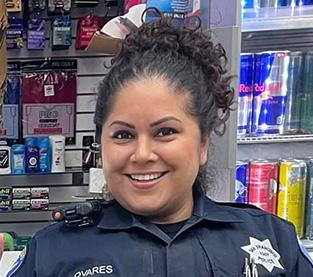

As a Latina giving back to her community, she admits that the job comes with highs and lows. Officer Ovares recommends a career in law enforcement for those military members looking to make a smooth transition to a new chapter.
To learn more about the San Francisco Police Department, or to connect with recruiter, go to: www.sanfranciscopolice.org/your-sfpd/careers




By Amber Robinbson San Diego Veterans Magazine
When I asked to go on a ride along with the San Diego Police Department, making a special request for any veterans-turned-cops, I expected a really serious, possibly dangerous, afternoon of shadowing our city’s toughest crime fighters.
What I got was an afternoon of heartfelt service to our San Diego community, honorable humility and a lot of respect.
When I asked whether former Marine Sergeant Major, Mark Wright, and his partner, former Marine Staff Sergeant, Sean Bunch, had rank or titles he said their titles were just San Diego police officers. They are relatively new partners, but act like they’ve known each other for years, which is usually the case when you get Marines together.
Wright is a newer addition to the force, coming on board two years ago, with Bunch only having two years left.
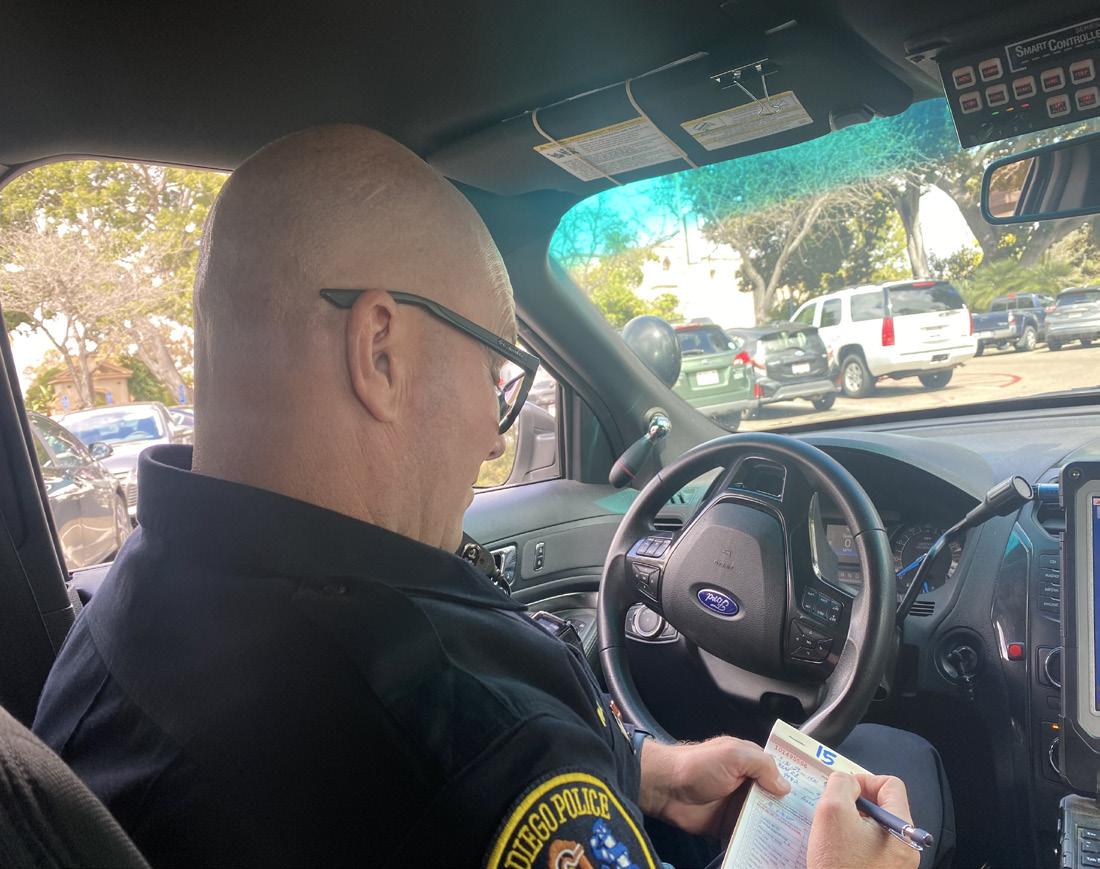
Currently, these brothers-in-arms spend their days patrolling the entirety of Balboa Park.
Although neither men are taking fire or kicking in the enemy’s door on this beat, like during their time in Iraq or Afghanistan, they still work hard to serve their local community. Service which can range from tracking down criminals to answering questions from lost pedestrians, to giving out stickers to kids and never backing down from a chance to turn on those flashing red and blues just to make one of them smile.
Most of our particular day was cruising around beautiful Balboa Park running car tags to see if they were current, from cars not displaying proper plates and placards to those double parked. Bunch says they often catch parole violators or even stolen cars doing just this. I was struck as I watched both officers go out of their way to look in and around vehicles to find plates or disability placards not displayed correctly so as to avoid issuing superfluous tickets.
“We try to give everyone the benefit of the doubt,” said Wright. “We’re not out to get anybody.”
Although, both officers confirm that enforcing even the most basic of park rules can yield large payoffs. During a recent patrol Bunch spotted an individual smoking in the park, which is illegal. As he circled back round, the individual turned and rapidly tried to walk away, which activated immediate suspicion. He was detained and came back with a warrant for numerous kidnapping and child molestation charges.

Both men say a lot of what they do is talk with museum owners and those living in the neighborhoods surrounding the park about their concerns. A shared concern by all is the park’s homeless population.
Bunch says their posture towards the homeless is mostly that of assistance, adding there are many resources available for those who would take them.
The city spends a lot of money on resources,” said Bunch. “The biggest problem we run into is whether or not the [homeless] people want them, and a lot of them don’t.”
Thus, the men tend to run into the same issues with the same people pretty often. Although frustrating, they have learned that respect goes a long way when challenged with these repeat offenders. Bunch recalls spotting one such offender in the park, who was in violation of his parole and wanted on warrant. He was unable to get to the offender immediately, but still apprehended him with a verbal request. The parolee waited patiently to be hand-cuffed and arrested, simply out of the respect he held for the law man.
“Being respectful of everyone despite their lot in life goes a long way in this job,” said Wright.
Both men say a huge part of their work is being able to connect and communicate with the myriad of people they meet daily.
Bunch says he feels he and Wright are lucky to come to the force later in life, given it means they have a wider frame of reference for those they meet and serve daily. “We deal with people who are going through all kinds of things in life,” said Bunch. “And it’s helpful to be able to say, ‘hey I know what you are going through, I’ve been there.”
As the day progressed, I realized that both gentlemen definitely had a long list of tough and unique life experiences to pull from. Both proudly served the United States Marines for years, traveling to war and all over the world, experiences that yield much wisdom as well as many a story.

Bunch, for instance, did not come to the force straight from the Marines, but from Hollywood. Surprisingly, he is a member of the Screen Actors Guild, working as a military advisor on various productions, like Lonestar 911, and appearing in some as well, such as one of the most recent Men in Black movies.
“I grew up outside of LA,” said Bunch. “So, I’ve always just kind of been around the business and found a place for myself there with all my military experience.”
Bunch hopes to return to work in Hollywood after he leaves the force, bringing with him a new level of experience and respect.
Wright, who retired from the Marines as a Sergeant Major never worked in Hollywood, but he does have plenty of stories about being a proud grandfather, father and new amputee. When I entered the Central Division Station and met him, he said he was just getting back to work after some time off after losing his leg.
Wright remained unscathed during his over-20-years in service, overseas deployments and endless combat train ups. It wasn’t until after service that he lost his leg in a motorcycle accident late one foggy night a little over a year ago. Wright says it had been an eventful second watch and he was leaving the station about 2 AM on his motorcycle when it happened.
“It was only about two minutes from work,” said Wright. “I was coming around a curve and entered into what I thought was fog, and as I’m entering, I see a headlight and side mirror in my lane.”
That headlight and mirror became an entire car that was blocking Wright’s entire side of the road.
“I was a heuy crew chief in the Marines and reverted to my training from that, grabbed my shoulders, braced for impact and went flying like a human lawn dart over my handlebars,” said Wright.
Wright landed in the ditch on the side of the road. He says he realized immediately that he had a back and leg issue. He learned that a bystander had called 911, but he requested they call back and state that the injured motorcycle rider was a policeman with the San Diego Police Department and expedite services. This one request would become pivotal in saving Wright’s life.
Continued on next page >
“What I didn’t know at that time was that I had severed two arteries in my leg, and I was bleeding out,” said Wright.
What Wright would learn later is his heel had also been torn off on the wrecked car as he sailed past it into the ditch. After much pain and many surgeries, Wright would finally lose his leg from the knee down. says he doesn’t let it get him down, though. He’s proud to continue to serve as one of our city’s finest.
Both he and Bunch take much pride in their time as Marines and as San Diego Police Officers. Each officer comes from strong military stock, with Wright’s grandfather being a World War II veteran and Prisoner of War and Bunch’s father a decorated veteran of Vietnam.
All in all, this Army vet’s afternoon with two Marines was an impressive one. Both seasoned public servants, these honorable men have discovered you must give respect to get it, that violence is often not the answer and the most important thing to keep in mind along the way, is a good, human dose of empathy.

For more information visit www.joinSDPDnow.com or email us at SDPDrecruiting@pd.sandiego.gov


